Last updated on April 26, 2023

Hanweir, the Writhing Township | Illustration by Vincent Proce
The most merciful thing in the world, I think, is the inability of the human mind to correlate all its contents. We live on a placid island of ignorance in the midst of black seas of infinity, and it was not meant that we should voyage far.
Call of Cthulhu, H.P. Lovecraft.
The plane of Innistrad is Magic’s home to the classics of horror and sci-fi. And what better way to combine both genres than with Lovecraft’s cosmic horrors? Shadows Over Innistrad (a reference to Lovecraft’s Shadow Over Innsmouth) was the first set to introduce cosmic horrors and mystery to Innistrad. Eldritch Moon came right after, and doubled down on these concepts.
Let’s delve into the mysteries of this set and, unlike Lovecraftian characters, keep our sanity by the end!
Eldritch Moon Basic Information
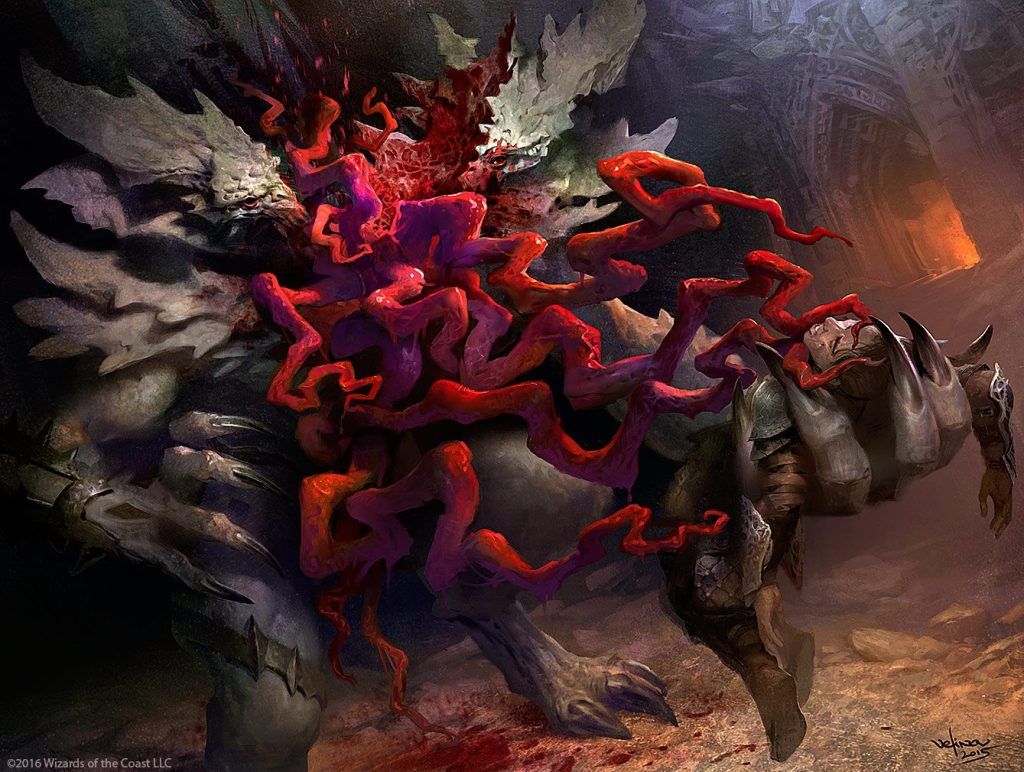
Boon of Emrakul | Illustration by Svetlin Velinov
Set Details
| Set Symbol |  |
| Set Code | EMN |
| Number of Cards | 205 Cards |
| Rarities | 74 common, 70 uncommon, 47 rare, 14 mythic rare |
| Mechanics | Madness, transform, skulk, delirium, meld, emerge, escalate |
Important Dates
| Event | Date |
|---|---|
| Prerelease Events | July 16 to 17, 2016 |
| Paper Release Date | July 22, 2016 |
| Available on Draftsim's Draft simulator | July 22, 2016 |
About the Set: The Story
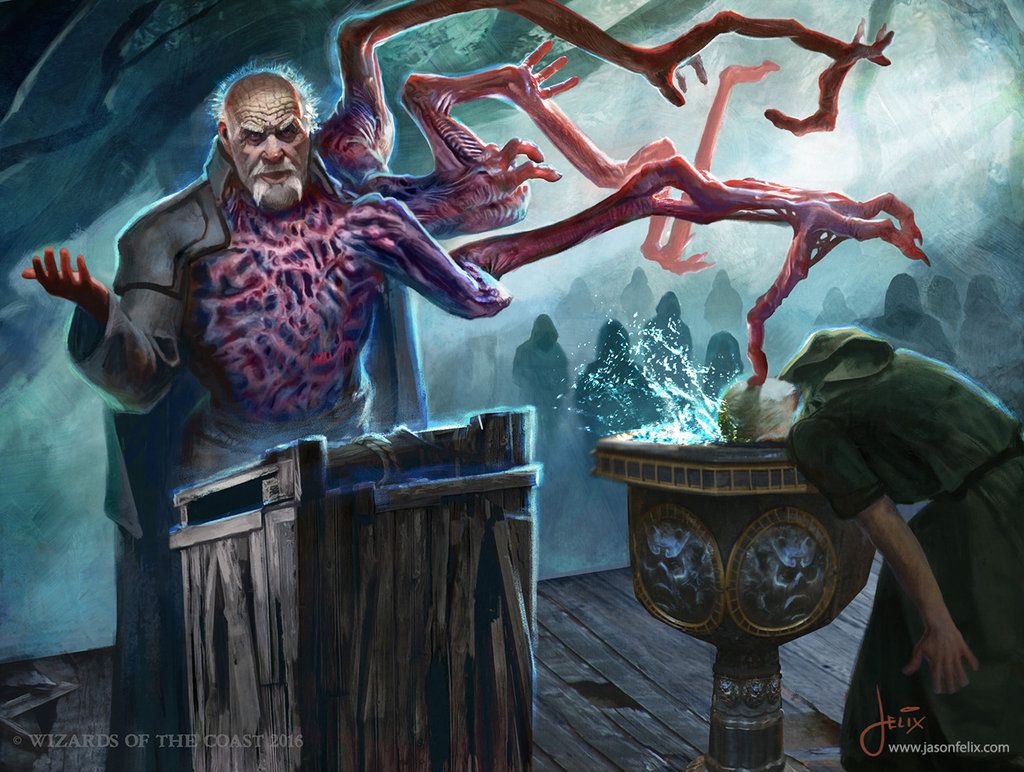
Emrakul's Evangel | Illustration by Jason Felix
Eldritch Moon’s story begins right where Shadows Over Innistrad’s leaves off. A wave of madness and mutations is taking over the residents of Innistrad, both human and monster alike. Avacyn went mad and was undone by Sorin; Nahiri, freed from the Helvault, started building cryptoliths all over the plane; Jace was investigating the strange occurrences that plagued the plane (while wearing a very silly trench coat).
With Innistrad’s defenses gone, Nahiri sparked her plan forth. The cryptoliths she’d built all over Innistrad redirected the mana leylines of the plane, creating a massive beacon of mana. This served to call into Innistrad the reason for the increasing madness and horrifying mutations: Emrakul, the last of the three Eldrazi titans that managed to survive the Gatewatch on Zendikar.
The monstrous titan’s influence only grew after her arrival. The entire town of Hanweir, one of the most important human bastions on the plane, was corrupted into a writhing mass that melded the inhabitants with each other and the town itself. The plane’s animals and monsters transformed too. Even Gisela and Bruna, two of the most powerful remaining angels, were fused together into Brisela, an inhumane horror of a creature.
As Emrakul descended upon Innistrad, Sorin and his vampire army marched onto Markov Manor. The vampiric ancestral home had been turned into a mockery of itself by Nahiri and her lithomancy to punish Sorin. The two planeswalkers dueled, but Sorin underestimated Nahiri and paid the price for it. The lithomancer trapped the vampire in the stone of his own manor’s walls, fusing him into it, alive. Nahiri saw this as a fitting payback for trapping her within the Helvault for so long.
With Sorin trapped and Nahiri gone from the plane, Olivia Voldaren took control of the vampiric force and led them to Thraben. There they joined forces with the Cathars to fight off the corrupted and mutated beings that were taking over the city.
The Gatewatch arrived on the plane, led there by Jace, just as Emrakul herself loomed over Thraben. They fought back the Eldrazi’s spawn but were unable to keep the upper hand. They were outnumbered and trapped without a way out. But Innistrad had another planeswalker resident who was unwilling to let it fall. Liliana used the power of the Chain Veil to unleash a massive horde of zombies on the city, commanding them to fight the Eldrazi monsters.
The tides started turning in favor of the Gatewatch, but Emrakul unleashed her full power onto the planeswalkers, who were joined by Tamiyo. Everyone except Liliana was knocked out by Emrakul’s psychic blasts, sending them into maddening nightmares that were only barely kept at bay by Jace’s powers.
Jace was able to fight against Emrakul’s maddening influence within this nightmare scenario, bringing himself and his allies awake. Liliana was bloodied and defeated, and the rest knew that what had worked on the other two Titans wouldn’t work on Emrakul.
Jace and Tamiyo came to the conclusion that if Emrakul couldn’t be defeated, she could be bound and trapped. The planeswalkers harnessed the power of the leylines to cast a massive spell that would trap the eldritch horror in the moon. The leylines began to fail, but as they did, Tamiyo used a particularly large spell scroll to lock Emrakul into the moon.
The kamigawan planeswalker later told Jace that it wasn’t really her that cast the spell, but that Emrakul had taken control of her body and trapped herself in the moon. They understood that it wasn’t them that defeated Emrakul but rather that she no longer felt the need to remain unleashed. She was gone, but the possibility of her return still existed.
After Innistrad was finally secured, Gideon invited Liliana and Tamiyo to join the Gatewatch. Tamiyo refused, but Liliana joined the group.
Set Mechanics
Madness
This mechanic basically gives a card an alternate casting cost that you can pay as long as the card with madness is being discarded. This makes self-discard archetypes and abilities insanely (heh) more viable and powerful. There’s a total of nine madness cards in this set since this ability was carried over from Shadows Over Innistrad, where it featured more heavily.
Madness as a mechanic actually dates all the way back to Torment, but it was during Time Spiral and Planar Chaos that it developed a more coherent theme and strategy. Shadows Over Innistrad and Eldritch Moon were excellent choices to bring this mechanic back from a flavor standpoint since it fits the block’s lore and themes perfectly.
Transform
Transform is an Innistrad-original mechanic. We’ve seen it show up time and time again since then because it's a great way to represent change, mutation, growth, and other various concepts in a single card.
Transform cards have two sides: a front side with a mana cost, and a transform side that can be turned faceup once a certain condition is met. Werewolves are the most well-known transforming creature type.
Some notable transform cards from Eldritch Moon include Docent of Perfection, which was the culmination of the story told through the amazing Delver of Secrets (both a gameplay staple and a wonderful piece of short storytelling through a single card) and Aberrant Researcher; Ulrich of the Krallenhorde, the first legendary werewolf (albeit a subpar one); and Voldaren Pariah, which is made particularly good thanks to its madness ability.
There are 16 cards that can transform in this set.
Skulk
Skulk is an evasive ability that makes creatures unblockable by creatures with power greater than theirs. There are only three cards in this set with the skulk mechanic as the mechanic is carried over from the previous set.
Delirium
This mechanic centers heavily around the graveyard. Cards with delirium gain extra effects as long as there are at least four different card types in your graveyard.
There are 14 cards with delirium in this set, some notable examples being Ishkanah, Grafwidow and Grim Flayer.
Meld
The meld mechanic was introduced with Eldritch Moon and has only shown up again in The Brothers’ War. Meld essentially allows to specific cards to combine with each other. When you do, both cards are flipped over and on the backside of each there’s one half of an oversized card.
There are only three pair of meld cards in Eldritch Moon, with Gisela, the Broken Blade and Bruna, the Fading Light being the strongest pair, especially in their melded form of Brisela, Voice of Nightmares.
Emerge
Emerge is an alternate cost that allows you to sacrifice a creature and reduce that creature’s mana value from the emerge cost on the card you’re casting. This ability featured exclusively on Eldrazi cards that had no mana symbols on their casting cost, while all emerge costs have mana symbols on them.
This helps limit what decks can play Eldrazi cards by giving them a color identity while keeping them colorless to fit the creature type’s flavor. Decimator of the Provinces is the most noteworthy of the 10 emerge cards from this set.
Escalate
Escalate is an ability that was introduced (and so far, featured only) in Eldritch Moon. This ability appeared as an extra cost on modal spells through which you could choose extra options for every time you paid the escalate cost.
Only eight cards had this ability, with Collective Brutality, Collective Effort, and Collective Defiance being the three standouts.
Eldritch Moon Full Card List
White
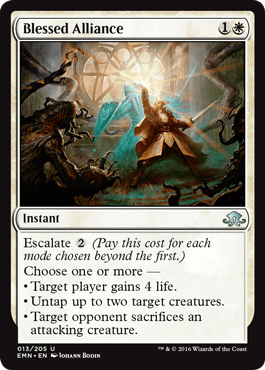
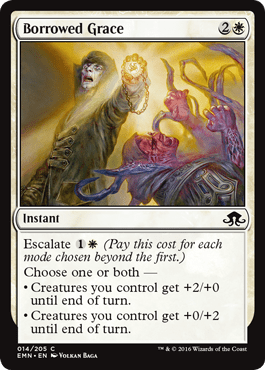
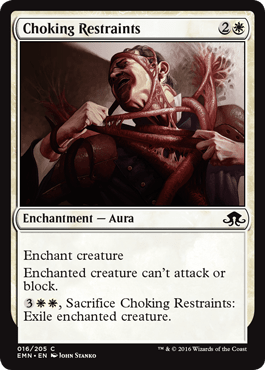
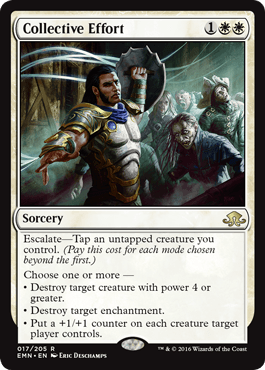
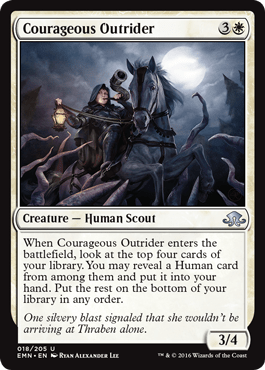
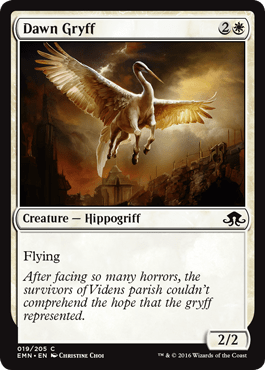
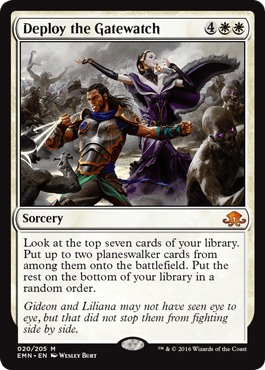
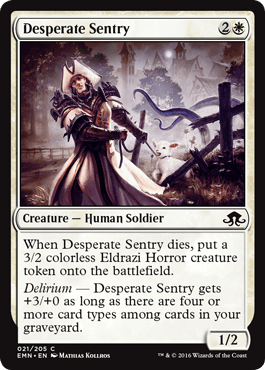
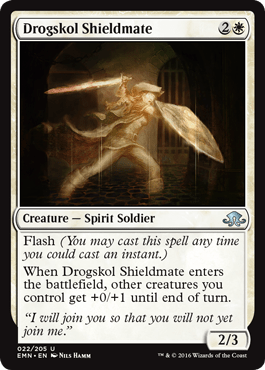
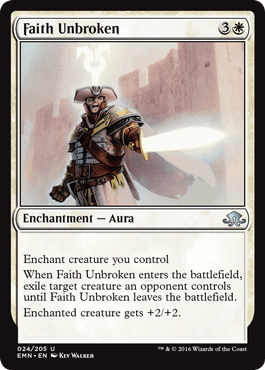
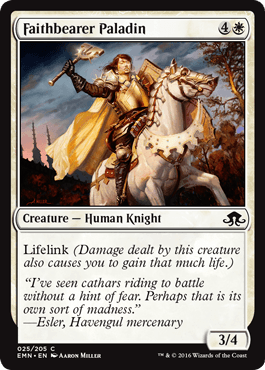
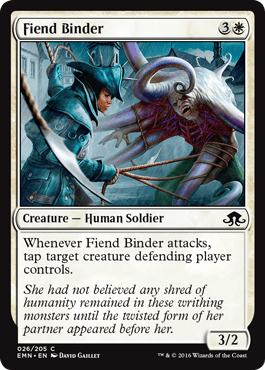
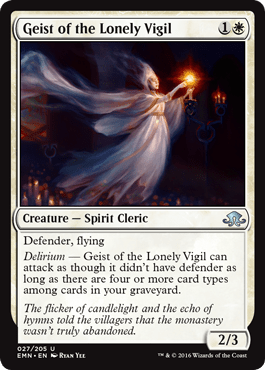
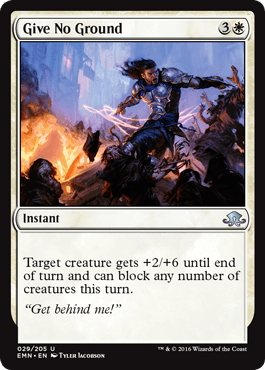
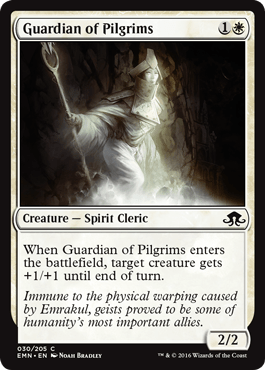
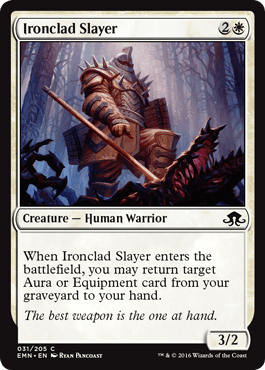
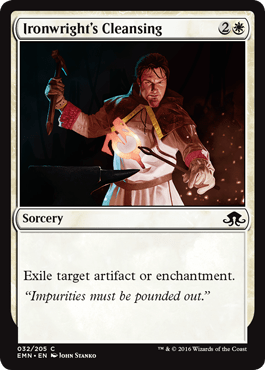
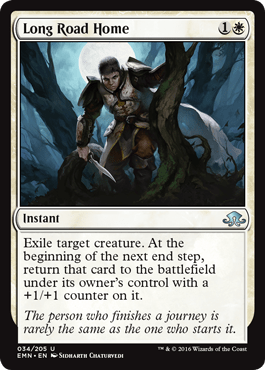
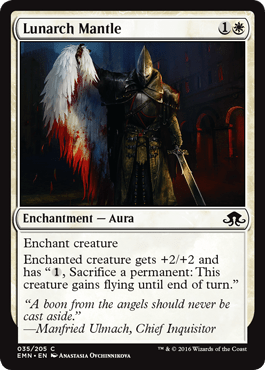

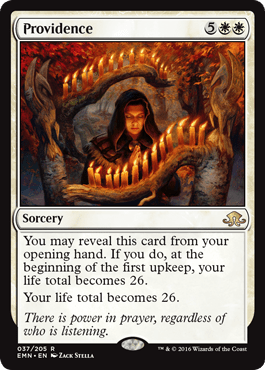
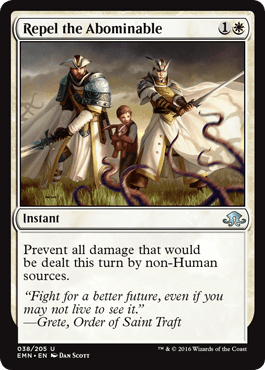
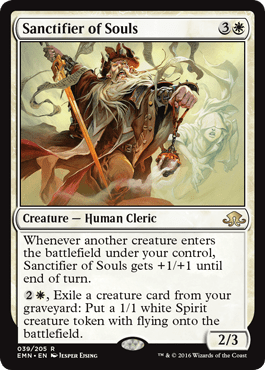
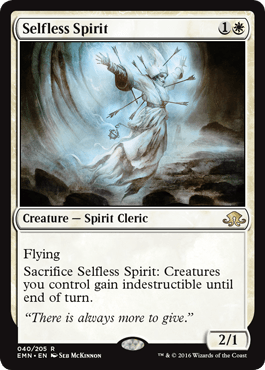
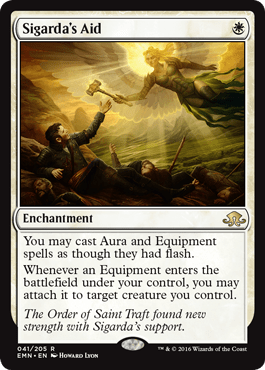
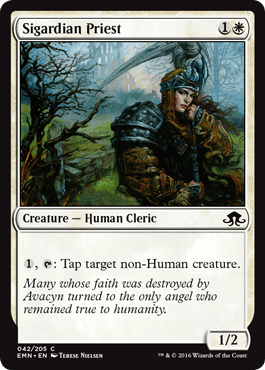
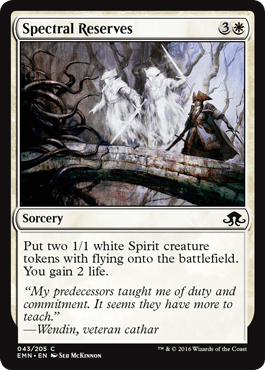
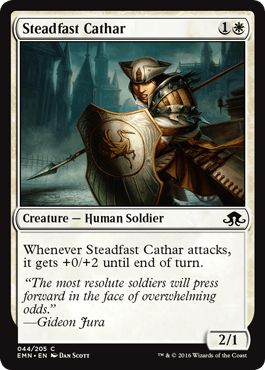
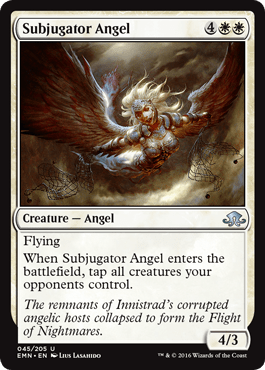
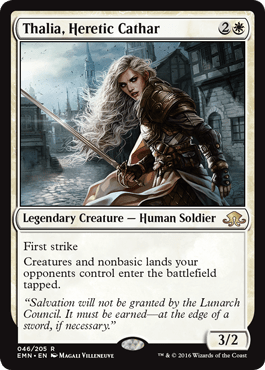
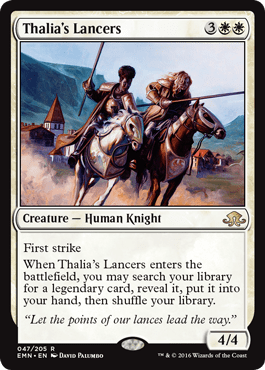
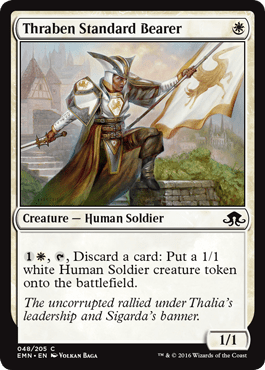
Blue
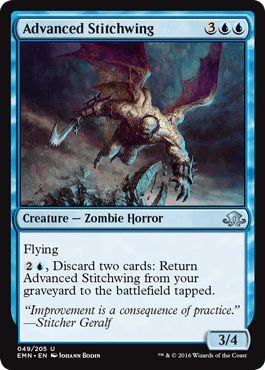

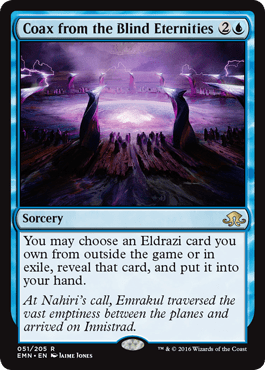
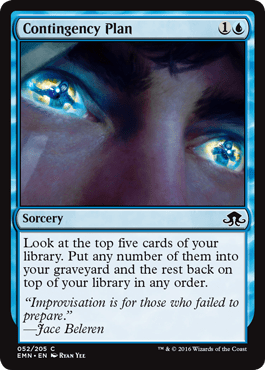
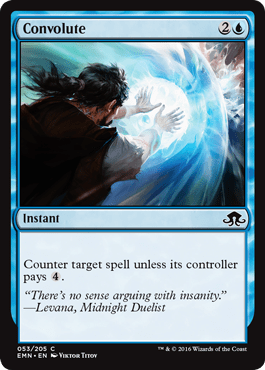
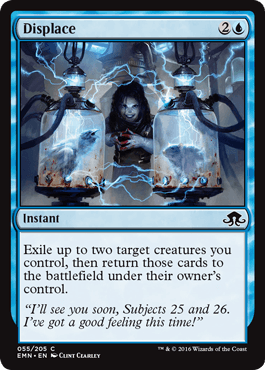
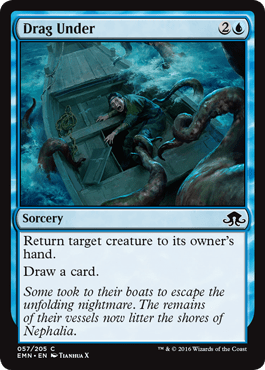
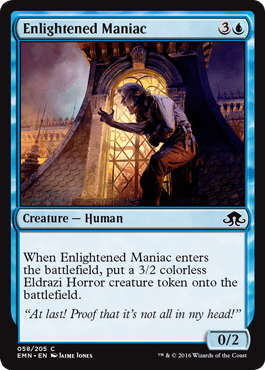
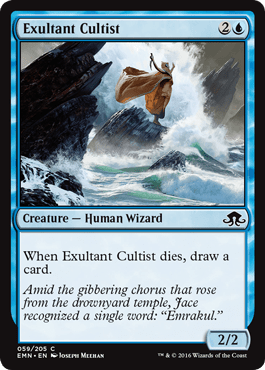
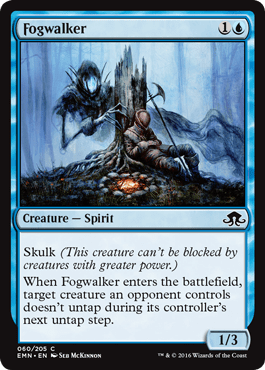
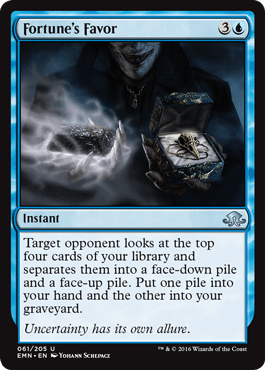
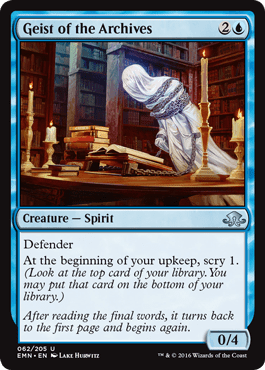
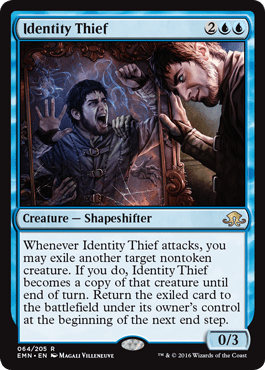
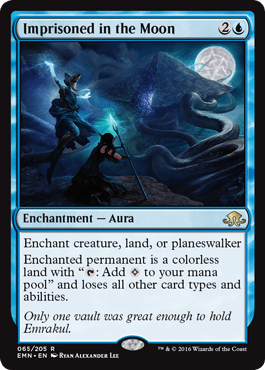
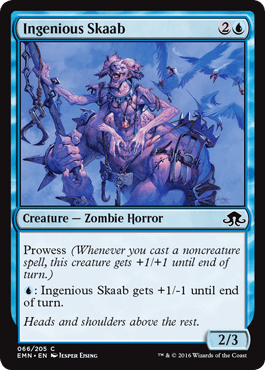
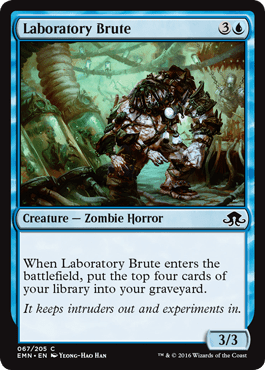
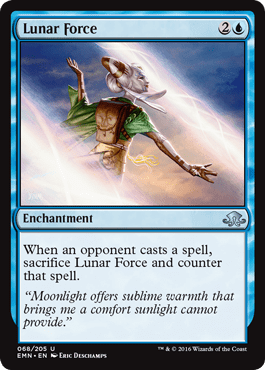
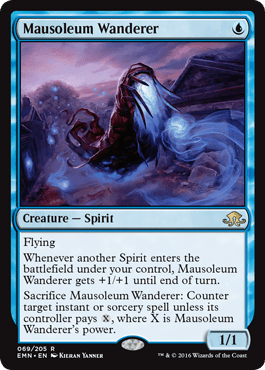
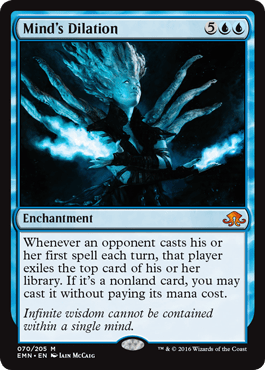
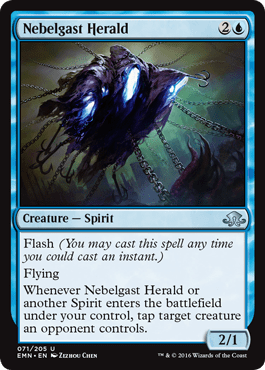

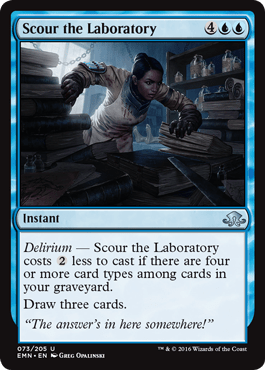
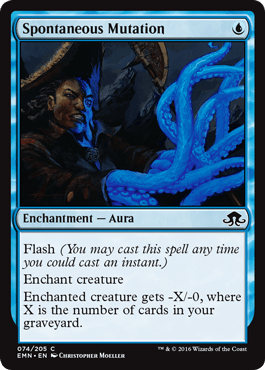
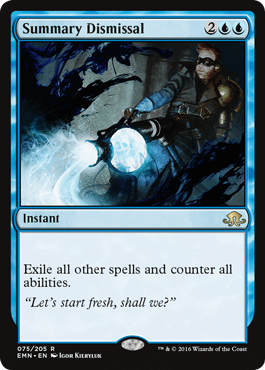
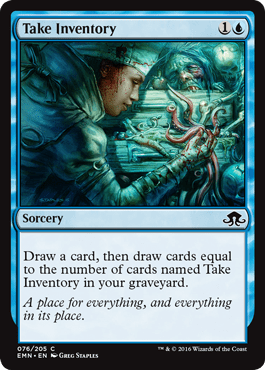
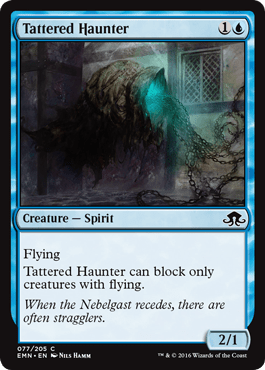
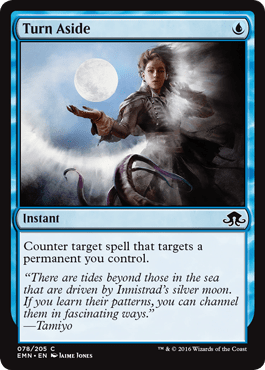
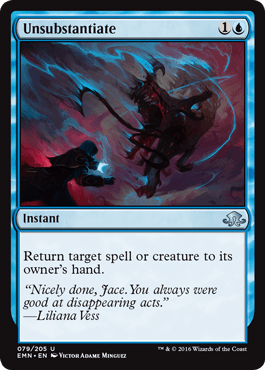
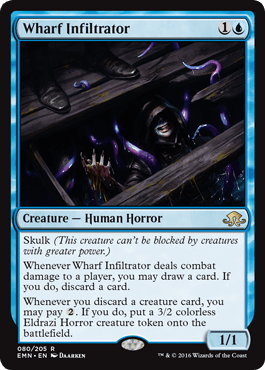
Black

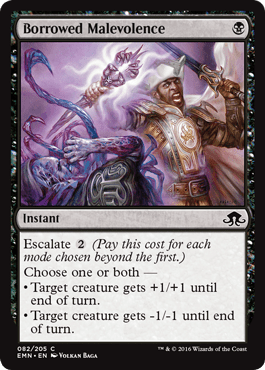
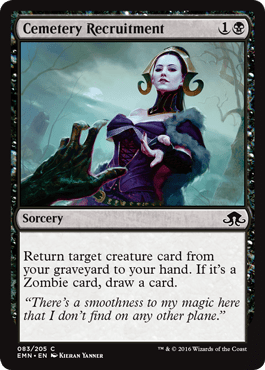
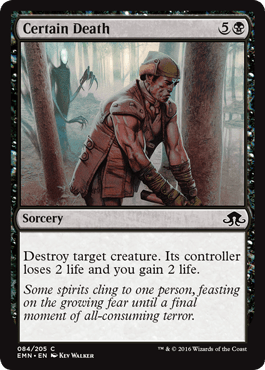
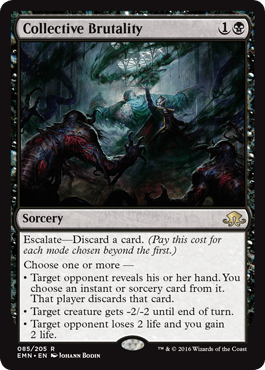
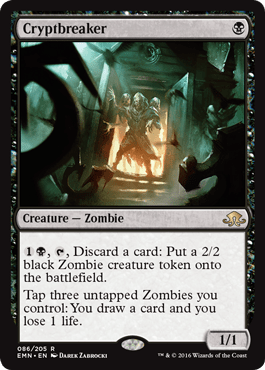
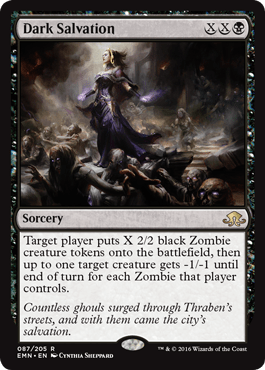
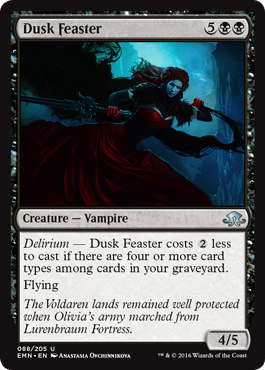
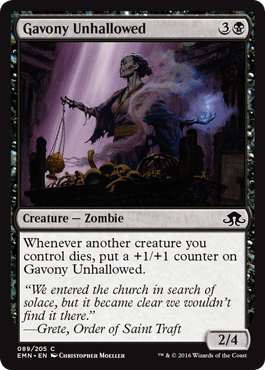
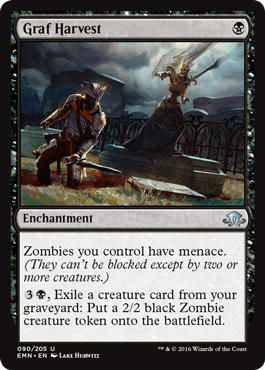
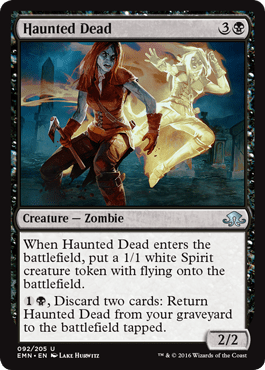
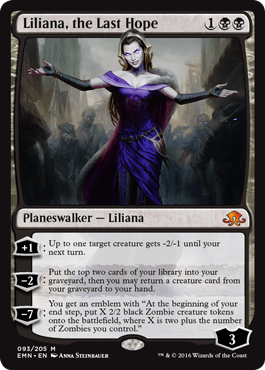
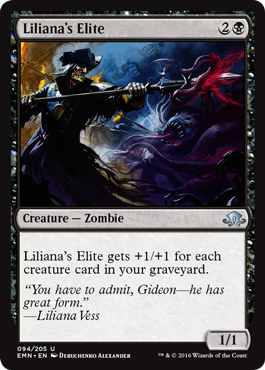
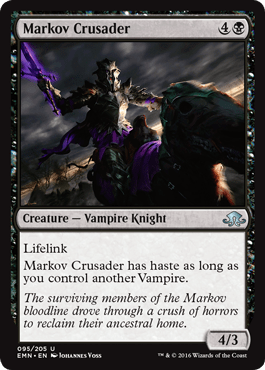
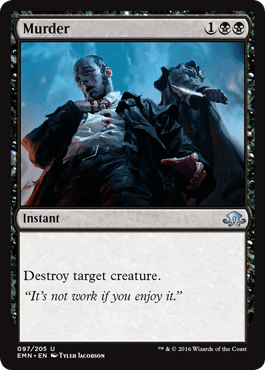
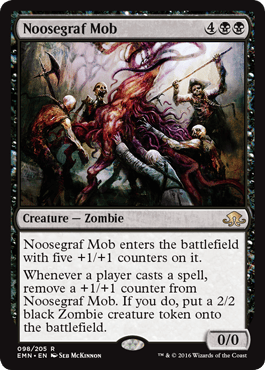
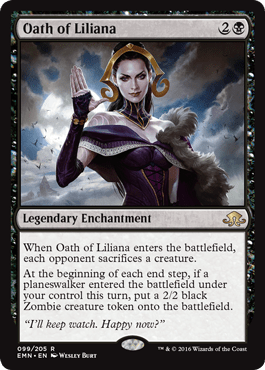
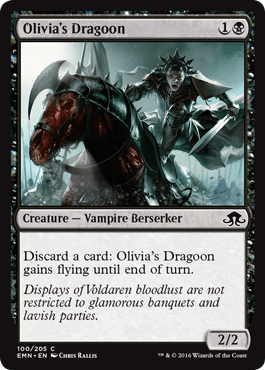
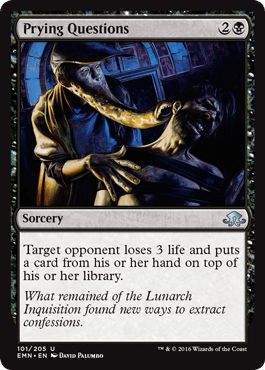
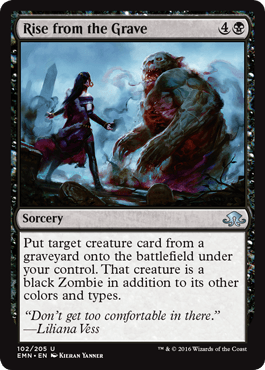
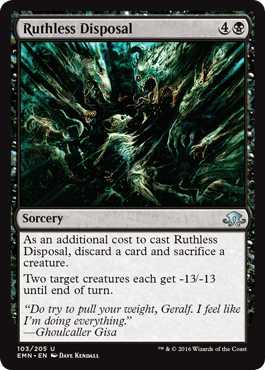
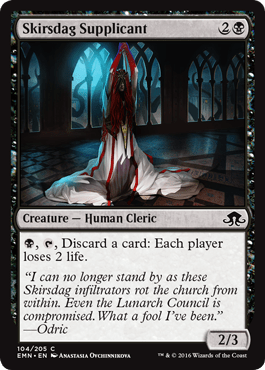
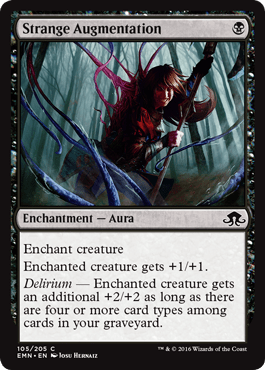
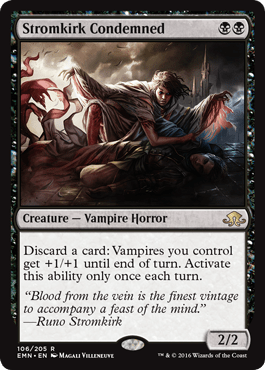
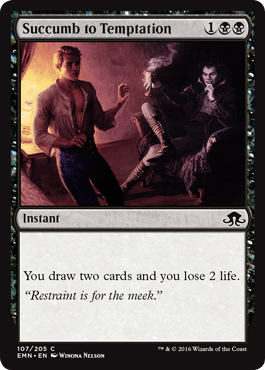
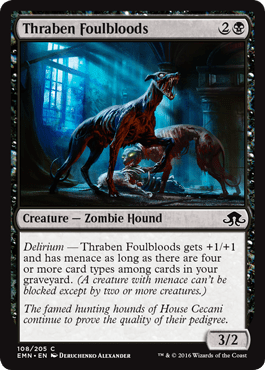
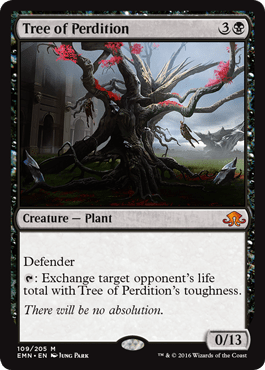
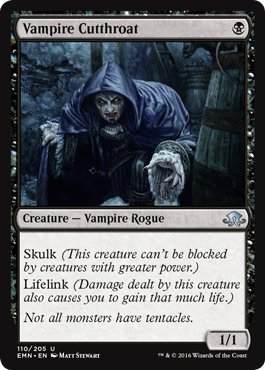
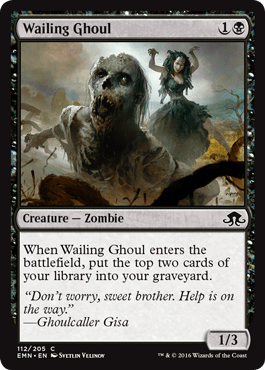
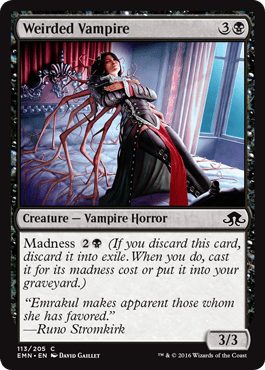
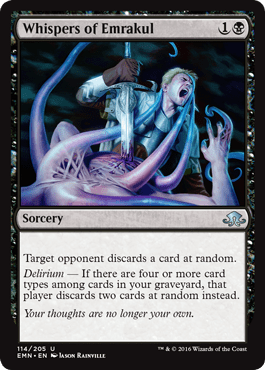
Red
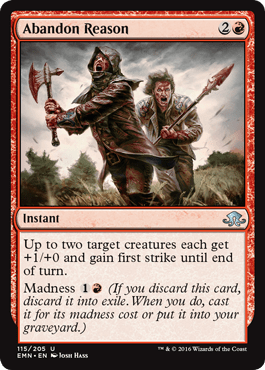
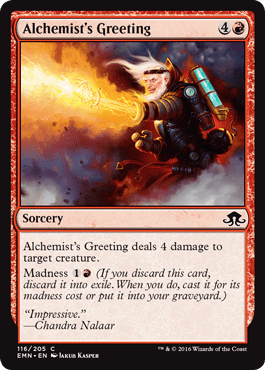
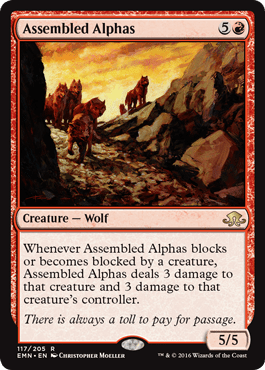
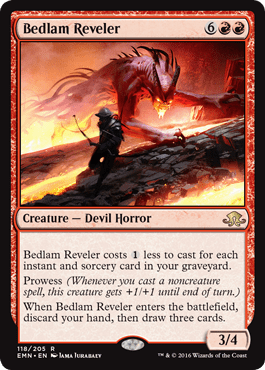
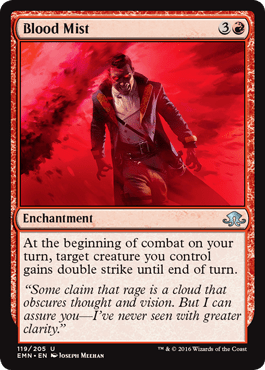
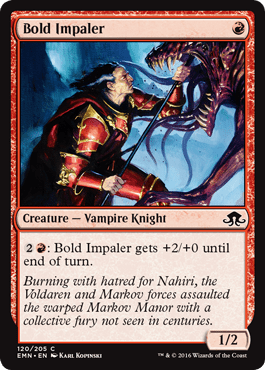
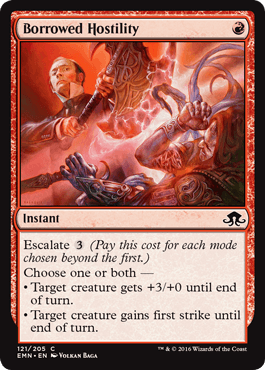
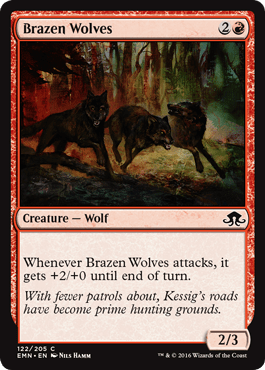
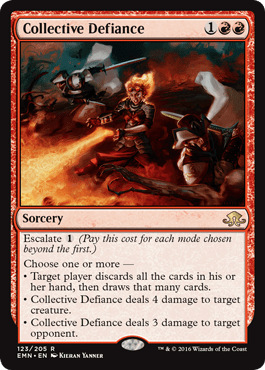
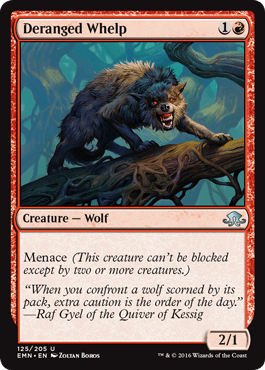
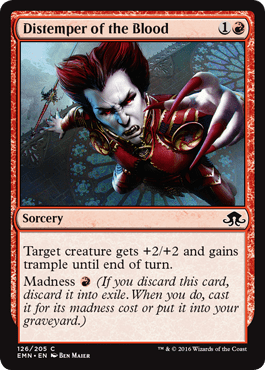
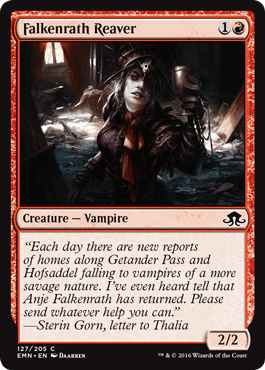
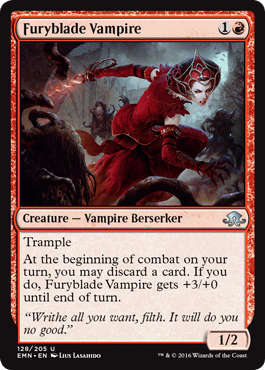
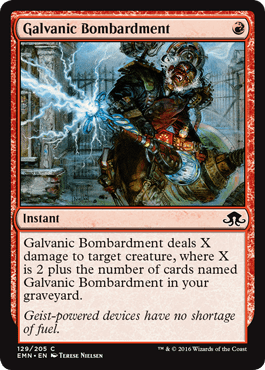
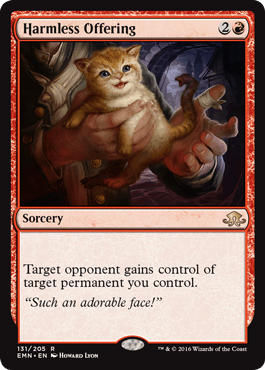
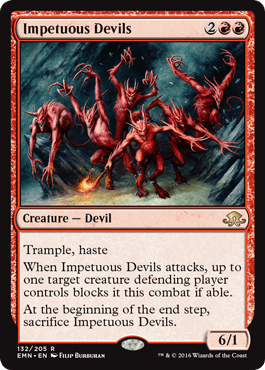
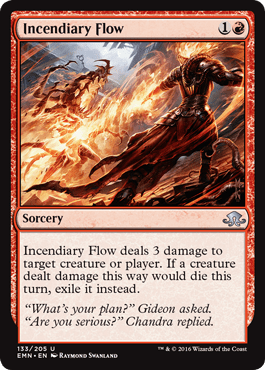
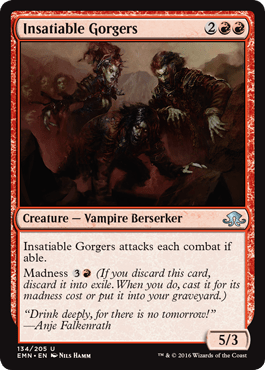
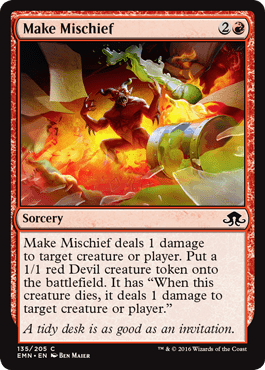
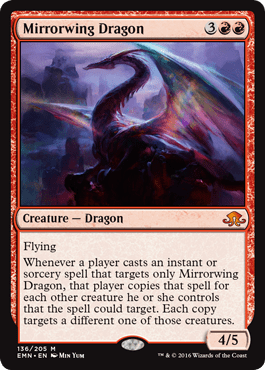
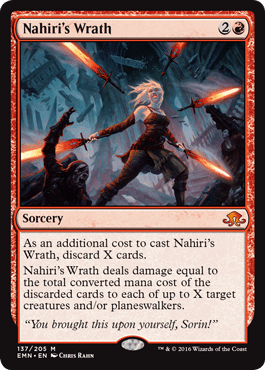
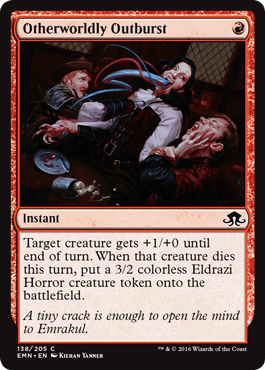
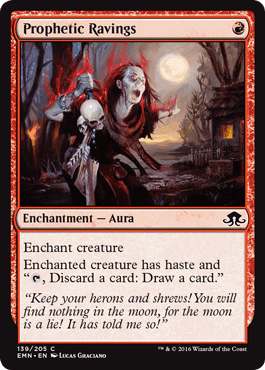
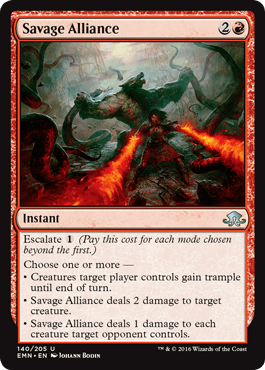
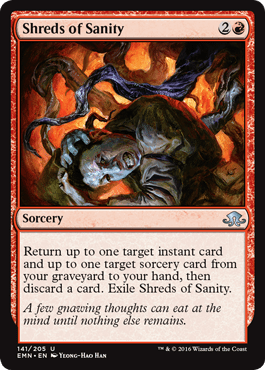
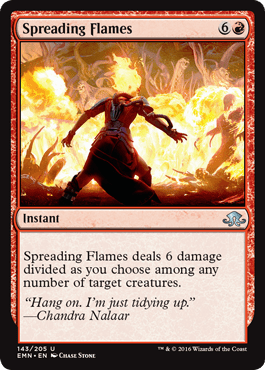
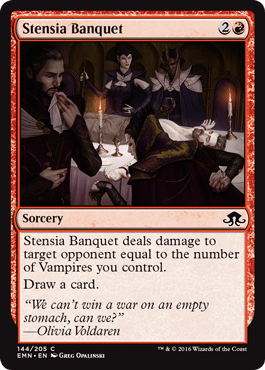
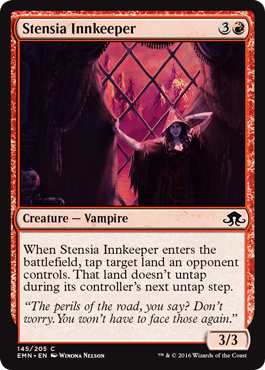
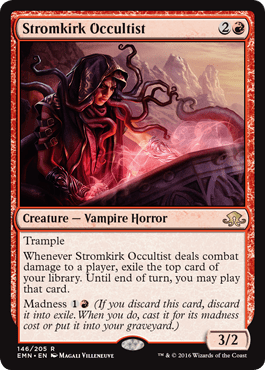
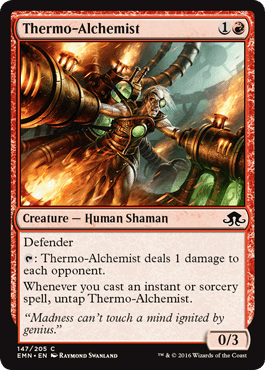
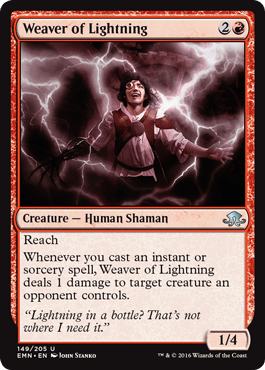
Green
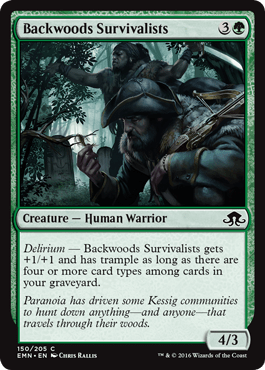
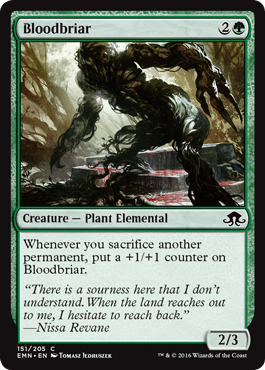
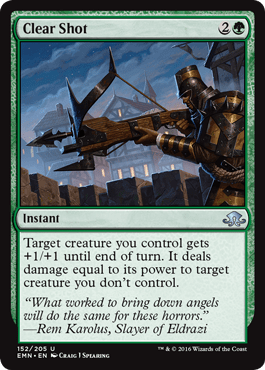
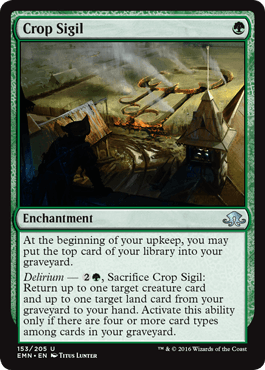
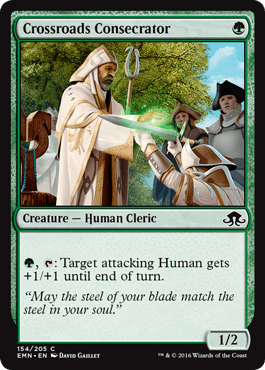
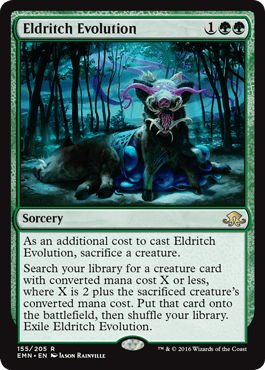
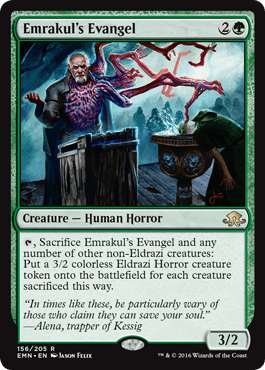

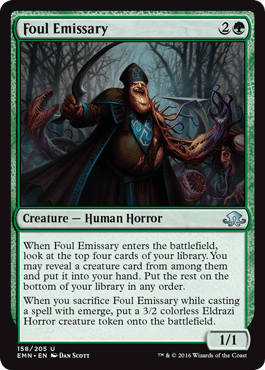
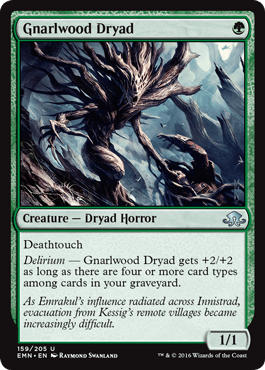
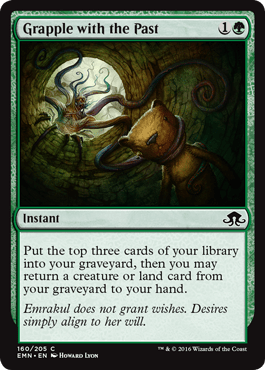
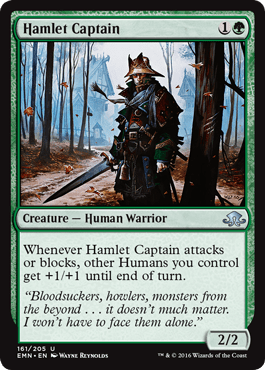
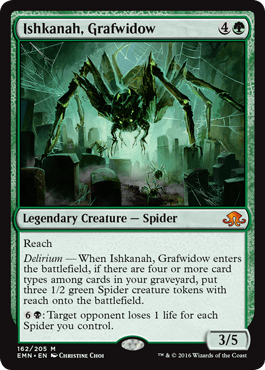
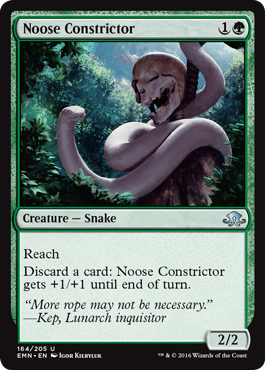
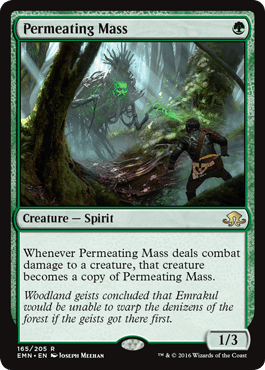
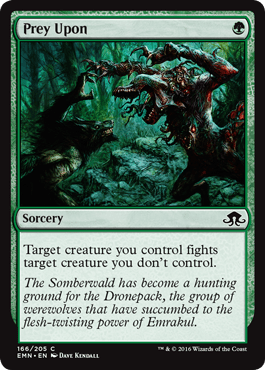
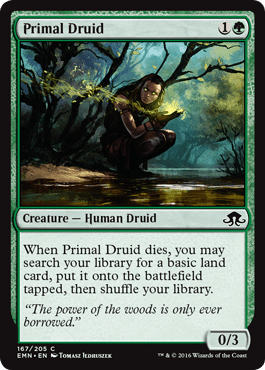
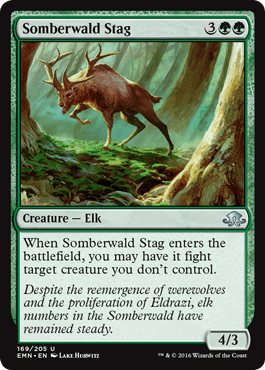
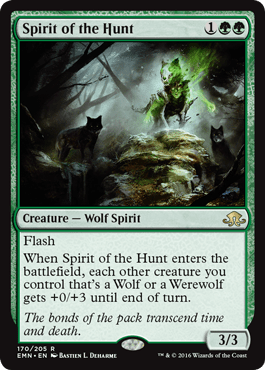

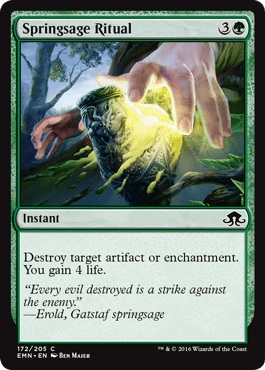
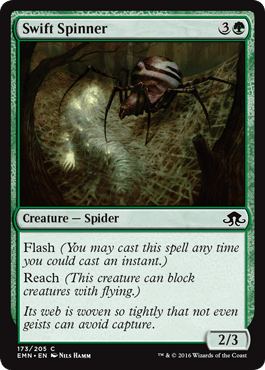
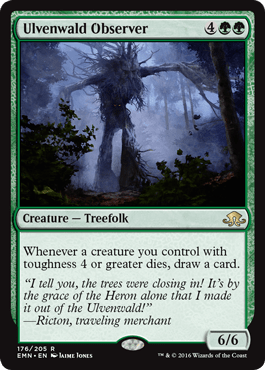
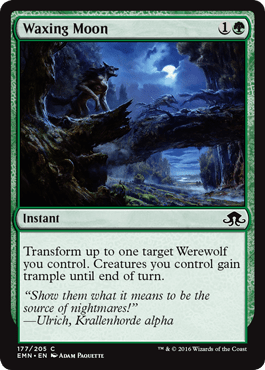
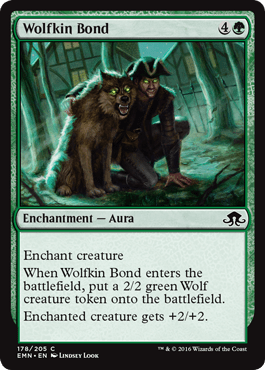
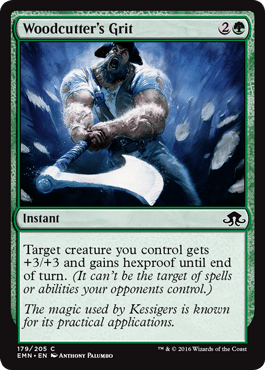
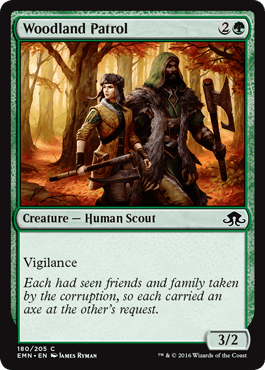
Multicolored
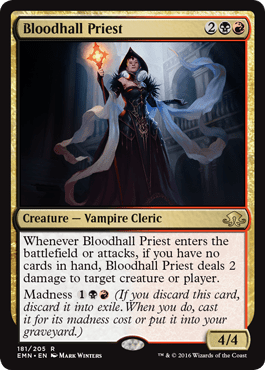
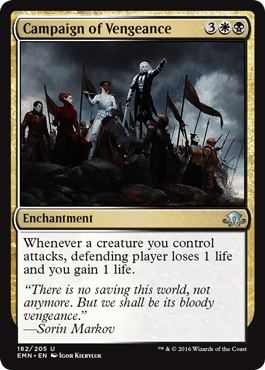
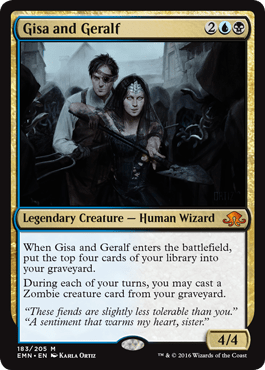
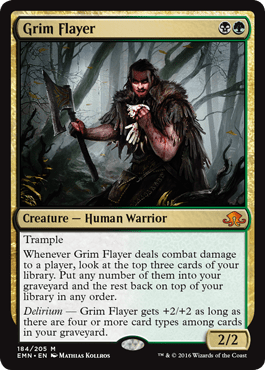
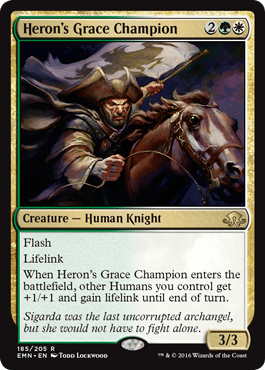
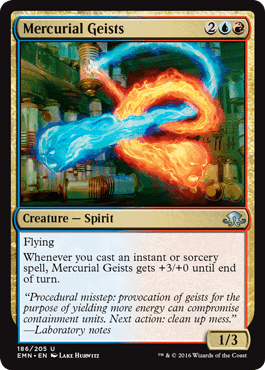
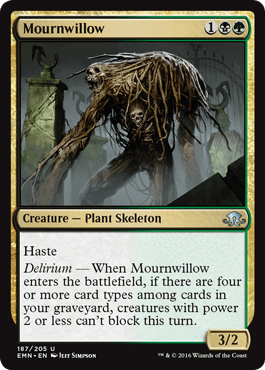
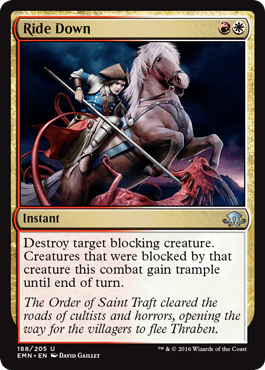
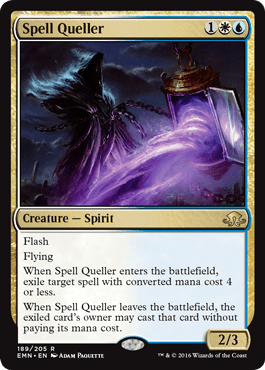
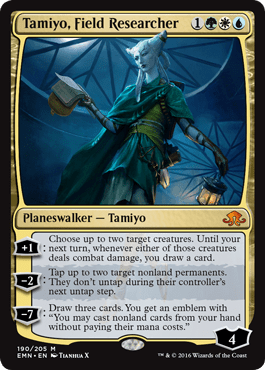
Colorless
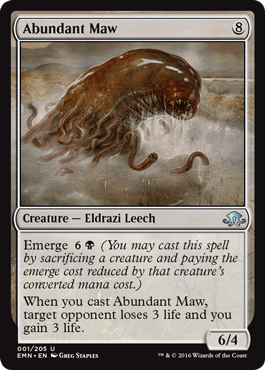
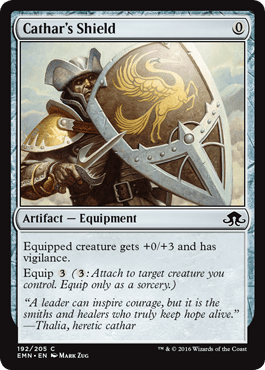
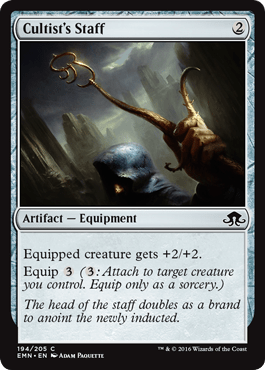
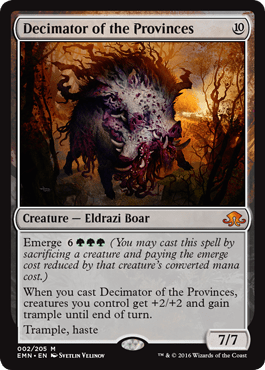
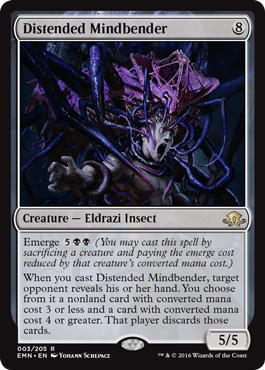
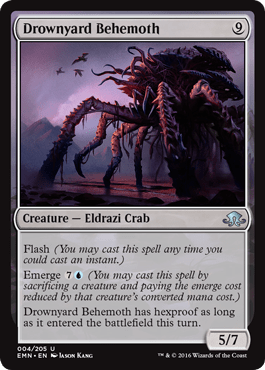

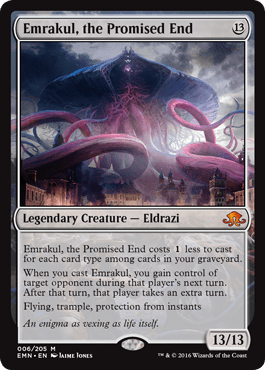
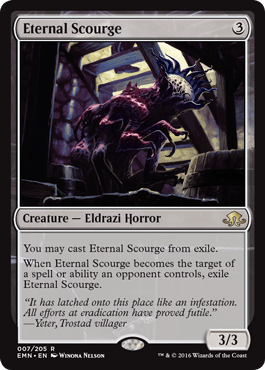

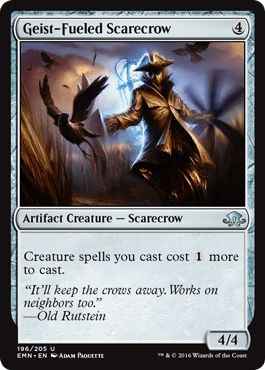
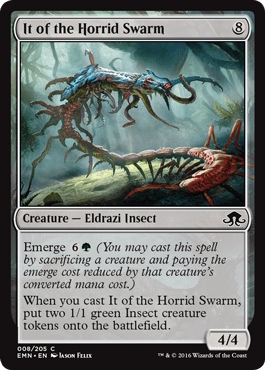
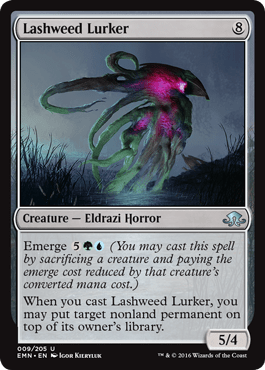
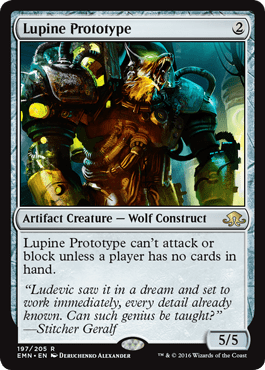
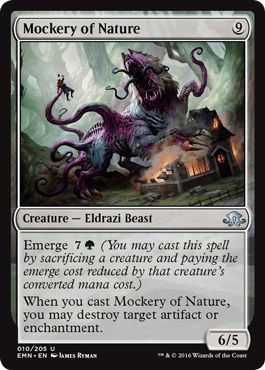
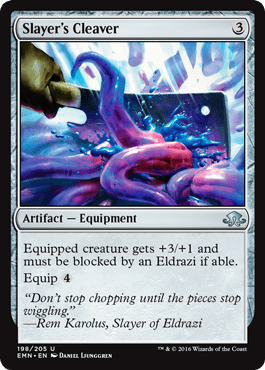
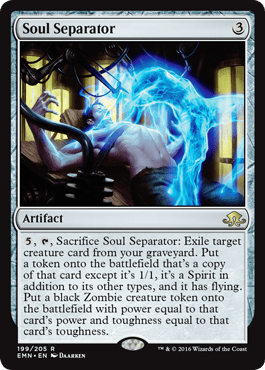
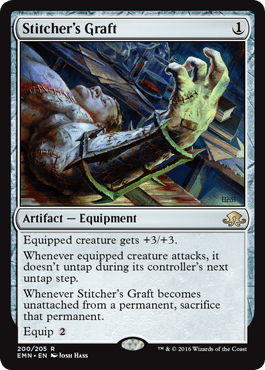
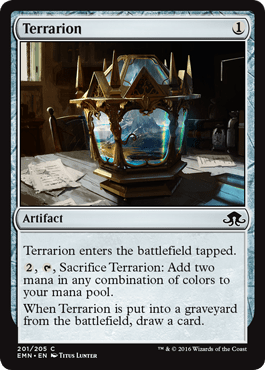
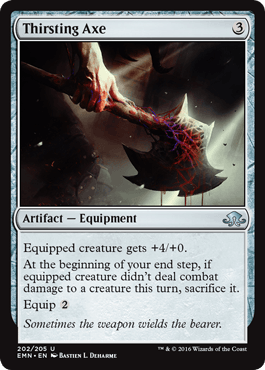
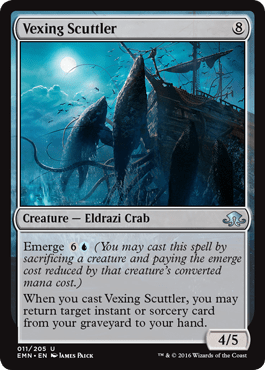
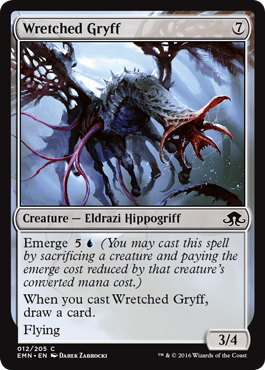
Lands
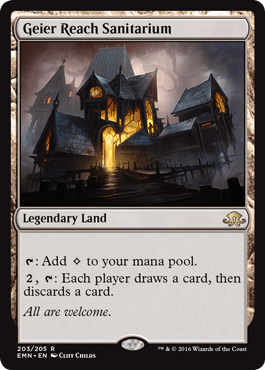
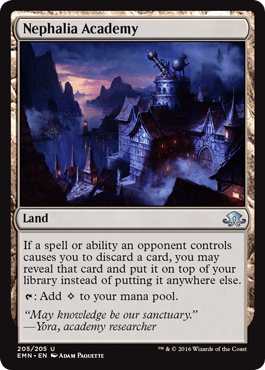
Double-Faced Cards
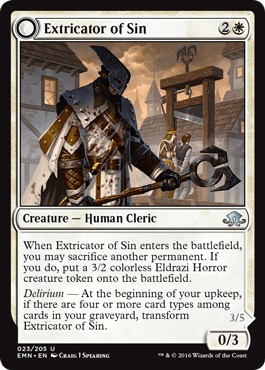
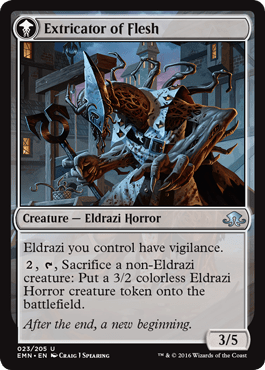
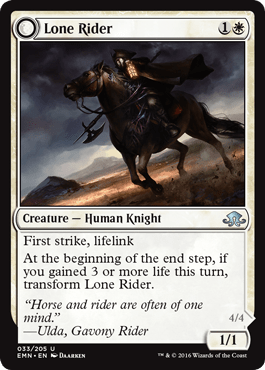
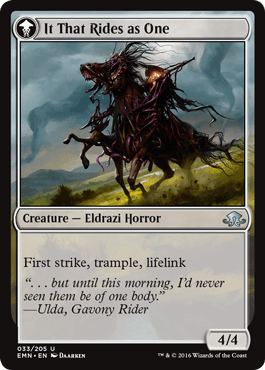
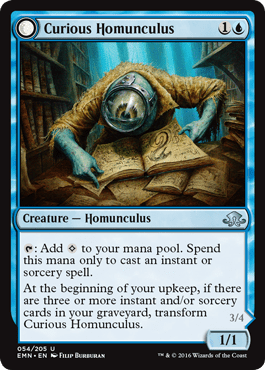
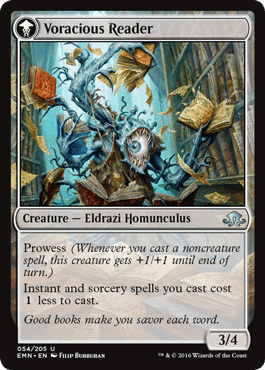
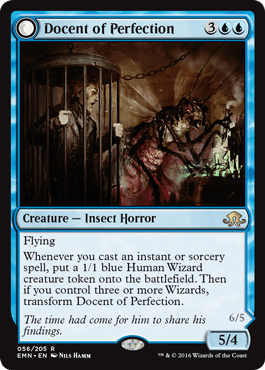
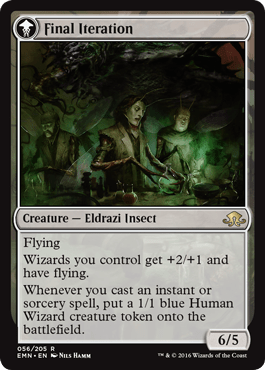
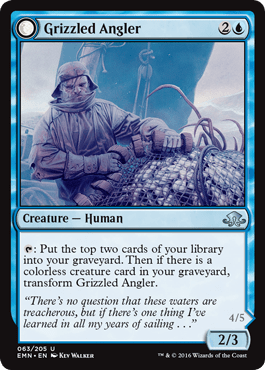
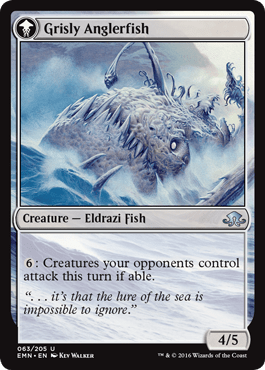
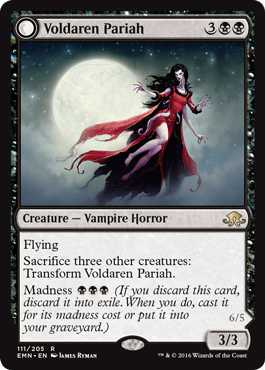
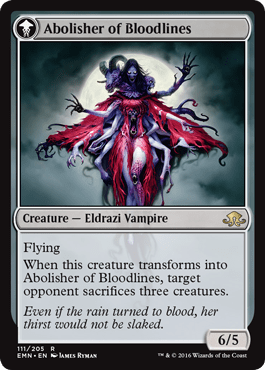
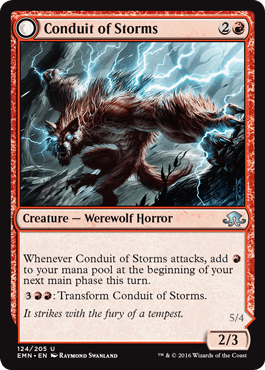
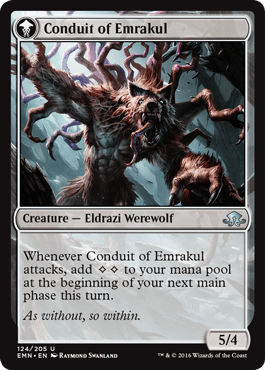
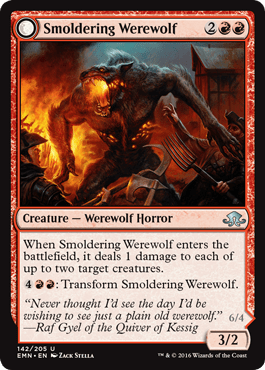
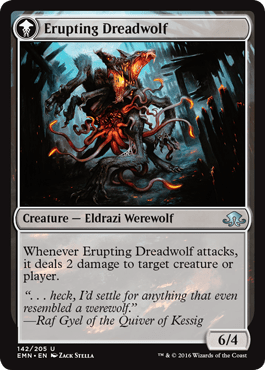
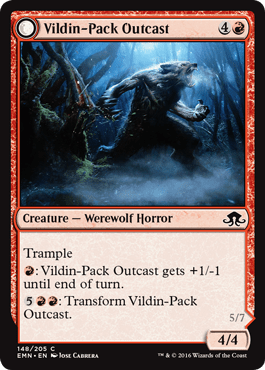
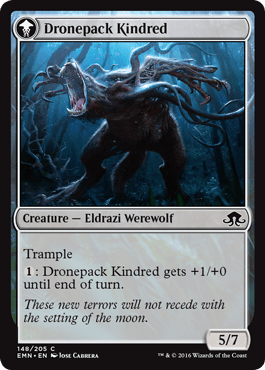
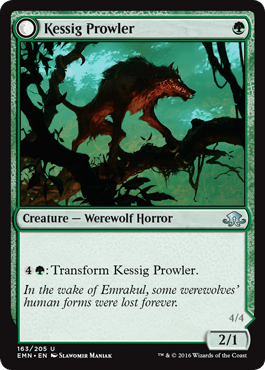
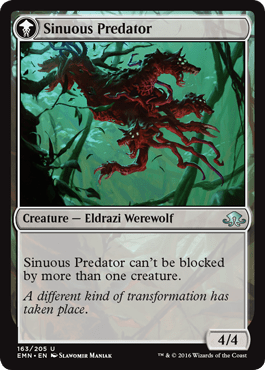
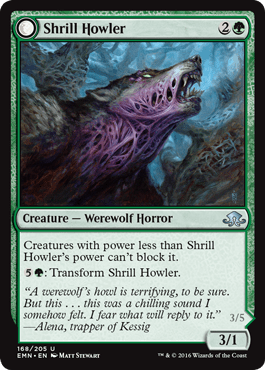
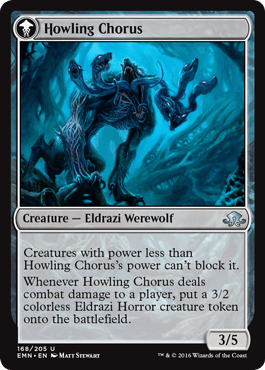
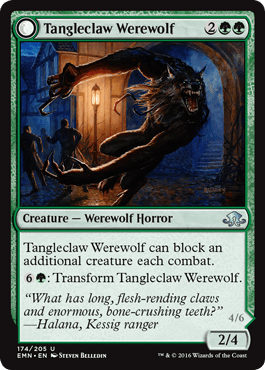
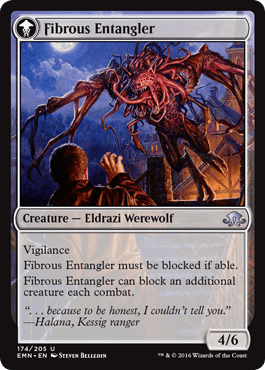
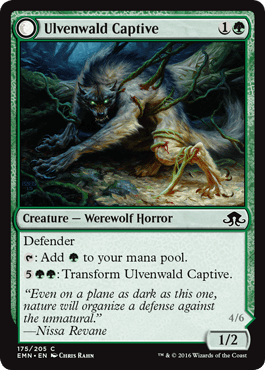
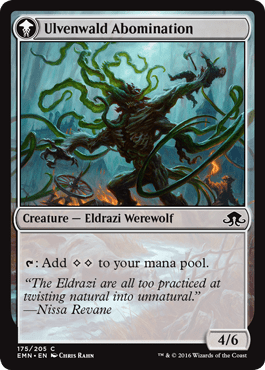

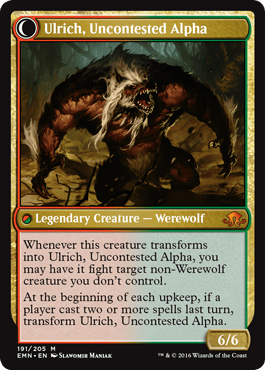
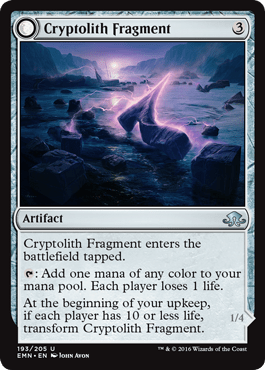
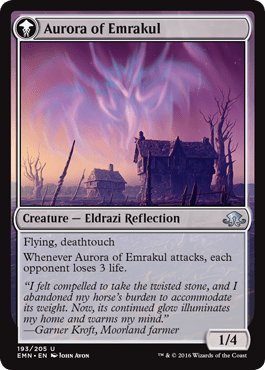
Notable Cards
The Meld Cycle
- Bruna, the Fading Light + Gisela, the Broken Blade = Brisela, Voice Nightmares
- Graf Rats + Midnight Scavengers = Chittering Host
- Hanweir Battlements + Hanweir Garrison = Hanweir, the Writhing Township
The three pairs of meld cards from Eldritch Moon were highly acclaimed when they came out. They’ve mostly been overpowered by those released in The Brothers’ War, but it was these pairs that introduced the ability. They were far from bad cards.
Emrakul: Standard’s First Ban Since 2011
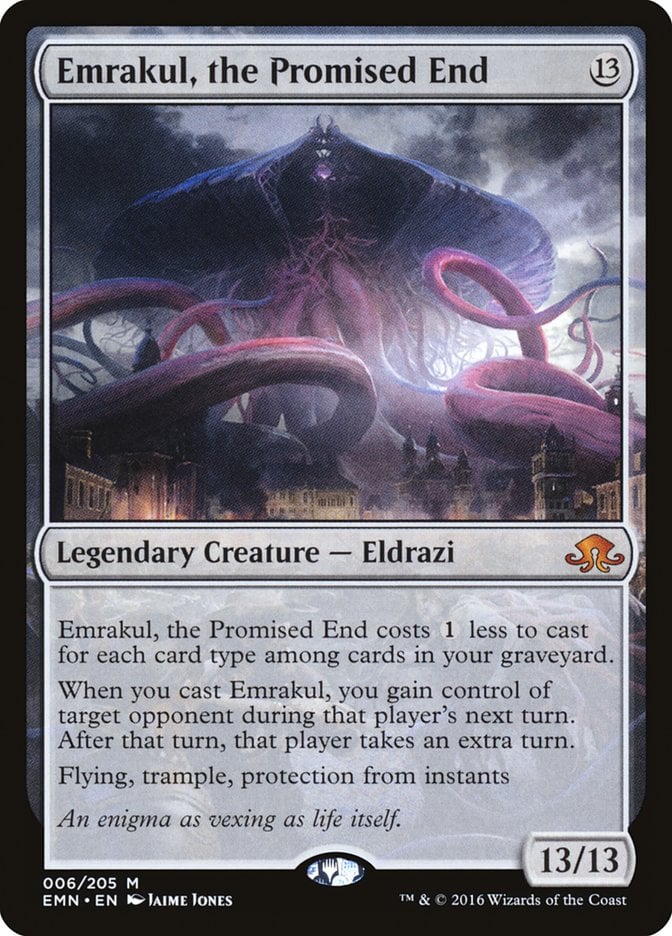
Emrakul, the Promised End found a home in delirium decks that were able to cast it around turns 4 or 5. This plus its second ability forced Wizards to ban it from Standard alongside Smuggler's Copter and Reflector Mage. The previous Standard ban was the infamous 2011 ban of Jace, the Mind Sculptor and Stoneforge Mystic.
Money Cards
- Emrakul, the Promised End
- Gisela, the Broken Blade
- Eldritch Evolution
- Sigarda's Aid
- Mind's Dilation
- Tree of Perdition
Available Products
Booster Packs

Eldritch Moon predates the creation of collector, theme, set, and draft boosters. The contents of classic booster packs are the same as what draft boosters bring nowadays.
- Revisit one of the most popular settings in Magic of all time!
Fat Packs

Fat packs were the name that was previously given to bundles. Eldritch Moon’s fat pack came with nine booster packs, an 80-card land pack, two deck boxes, one card box, and a spindown life counter.
- Revisit one of the most popular settings in Magic of all time!
Prerelease Packs
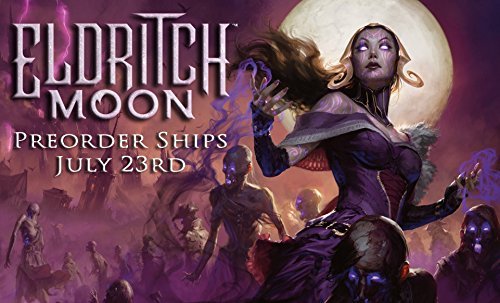
The prerelease packs for this set came with:
- 4 Eldritch Moon booster packs
- 2 Shadows Over Innistrad booster packs
- 1 spindown life counter
- 1 random Eldritch Moon prerelease promo
- 1 Zombie token
- Comes with: 4 Eldritch Moon booster packs 2 Shadows Over Innistrad booster packs Randomized date-stamped premium promo card Spindown life counter Insert with deck-building advice
Intro Packs
Eldritch Moon had five introductory decks:
These five packs came with 60-card, ready-to-play decks built around a relatively starter-friendly power level.
Wrap Up
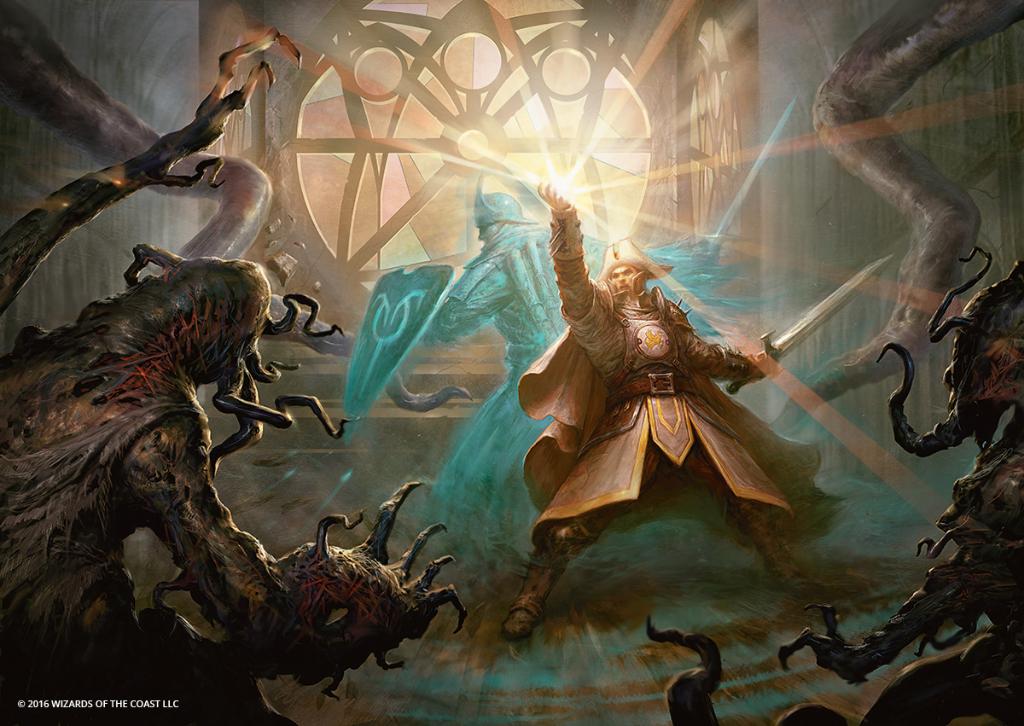
Blessed Alliance | Illustration by Johann Bodin
Eldritch Moon is a weird set. Very aptly, it has Emrakul’s shadow looming over it thanks to her card having earned the first Standard ban since 2011. I personally think the set was fun and it introduced some creative new ideas while tracking a captivating story. I admit that I’m a Lovecraft fan, so seeing so many references to him did pander to me specifically.
But enough about what I think, what did you think of this set? Were you able to play it when it came out? Could you contemplate Emrakul's unknowable horror without losing your sanity? Feel free to leave a comment below, and don’t forget to visit the Draftsim Discord to find an amazing community of Magic fans.
That’s all from me for now! Have a good one, and remember, Ph'nglui mglw'nafh Cthulhu R'lyeh wgah'nagl fhtagn!
Note: this post contains affiliate links. If you use these links to make a purchase, you’ll help Draftsim continue to provide awesome free articles and apps.
Follow Draftsim for awesome articles and set updates: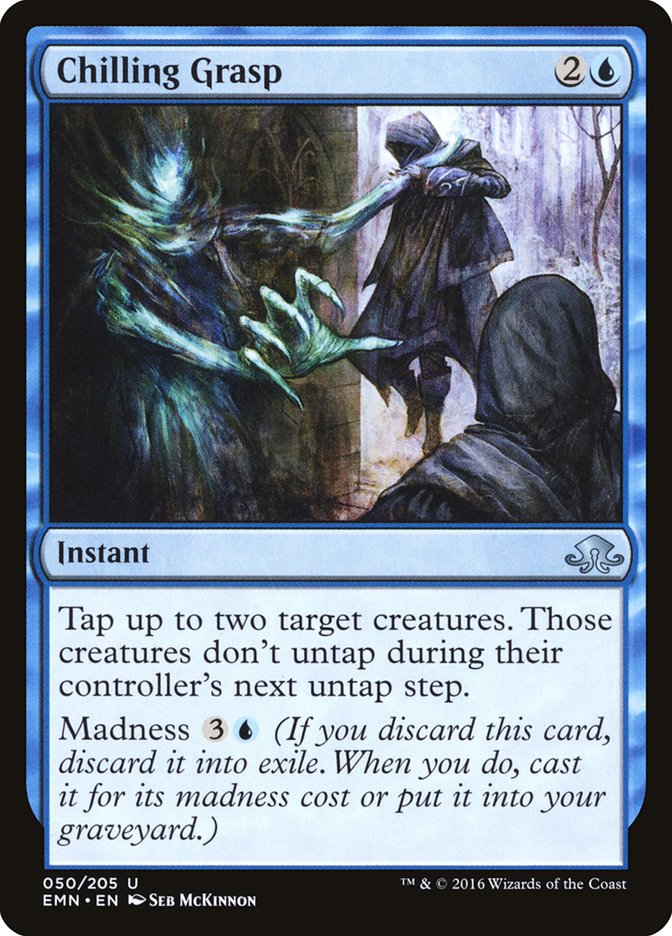
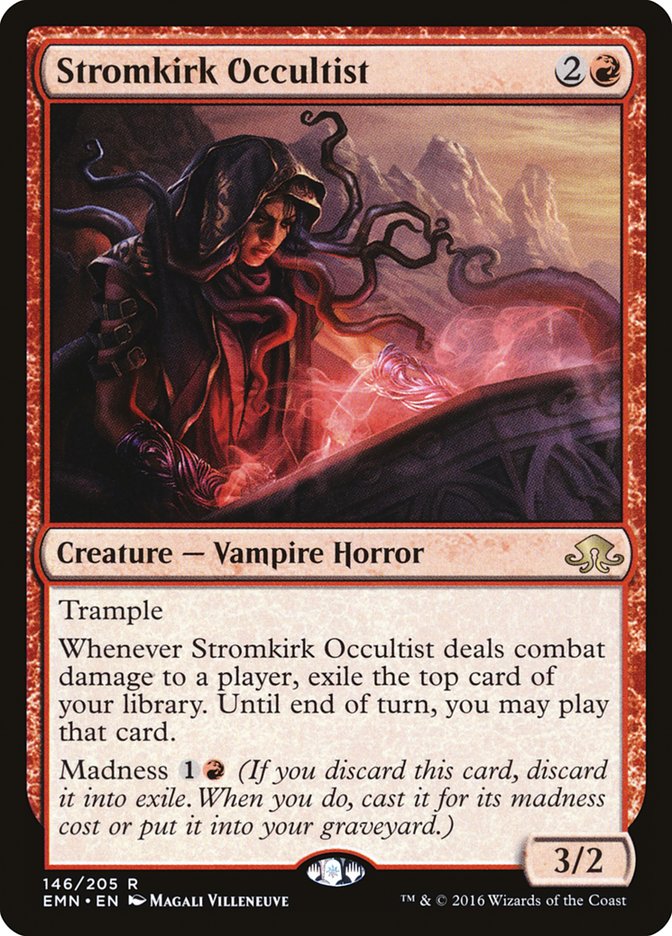
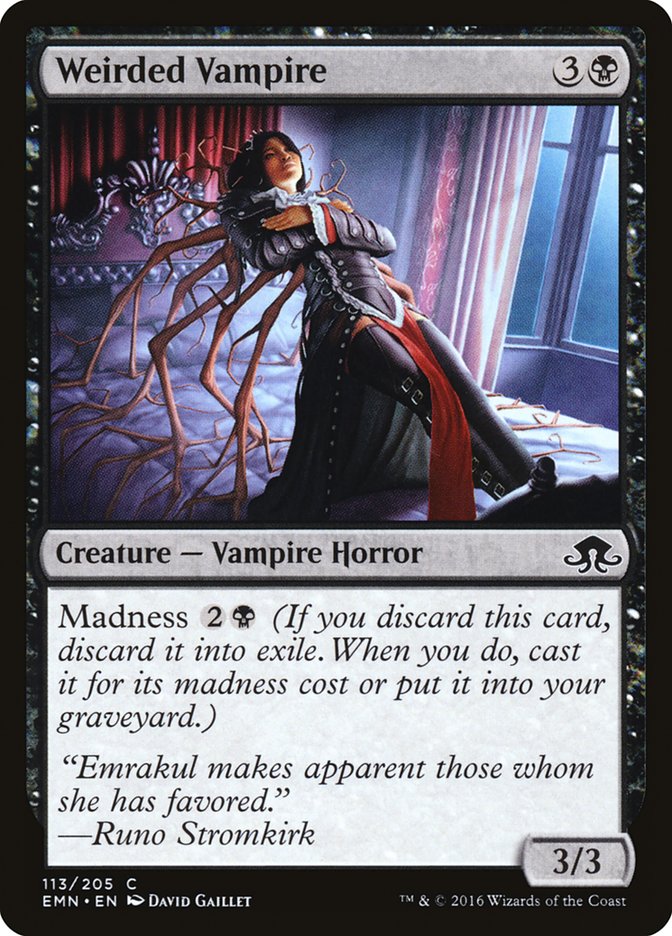
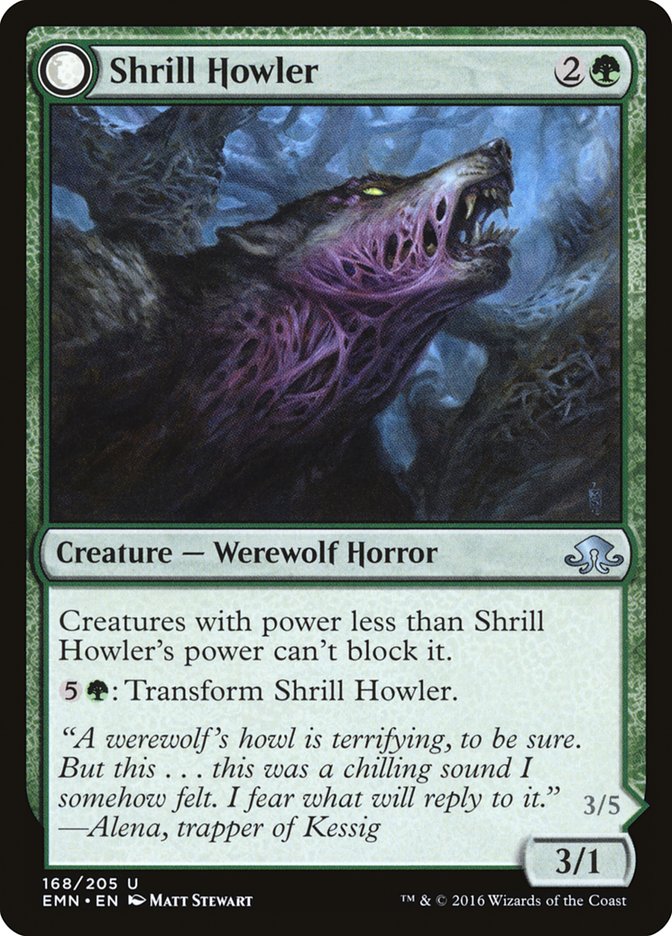

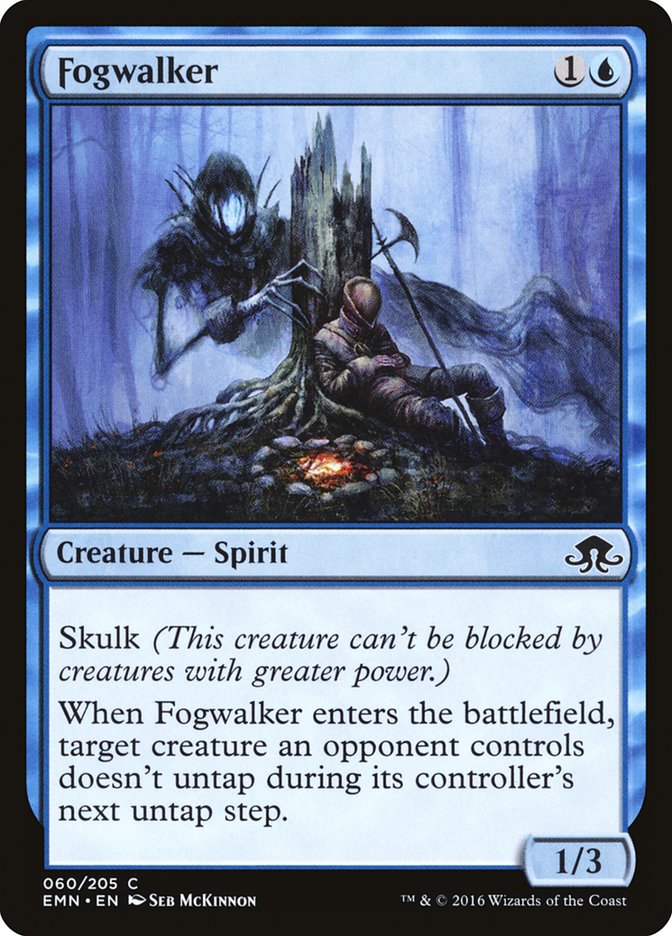
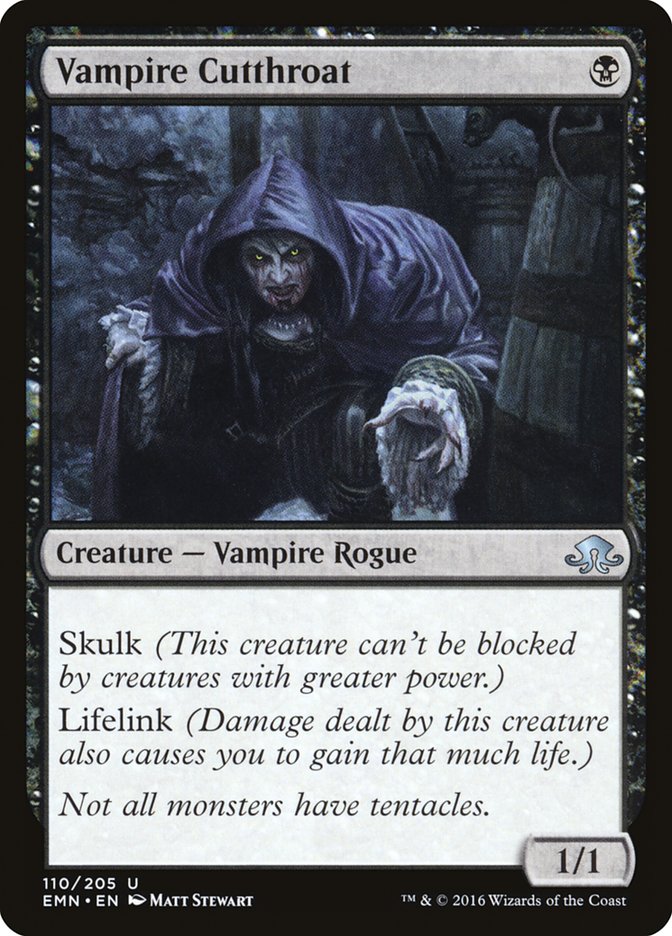
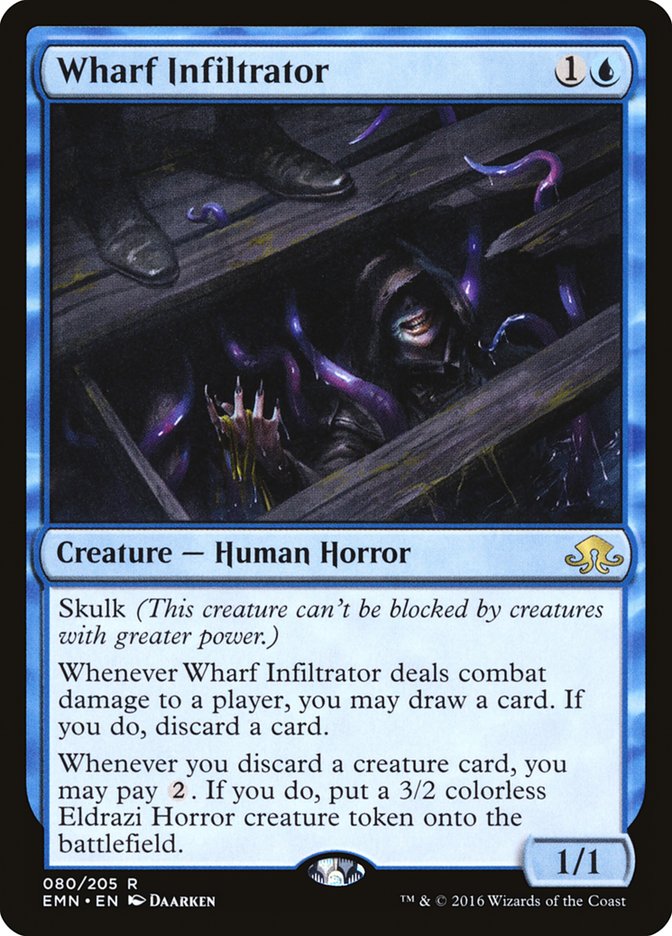
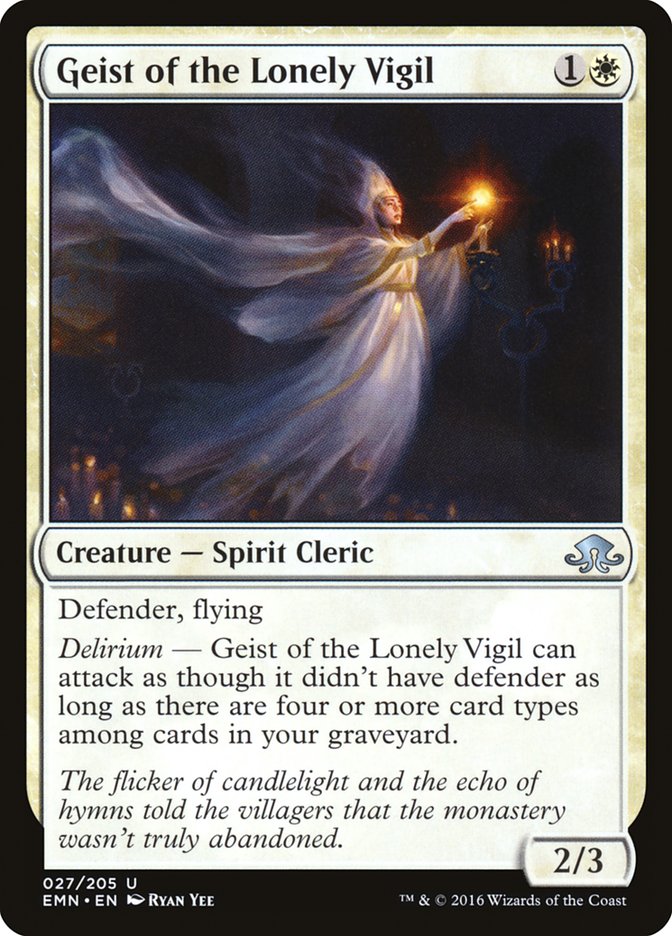
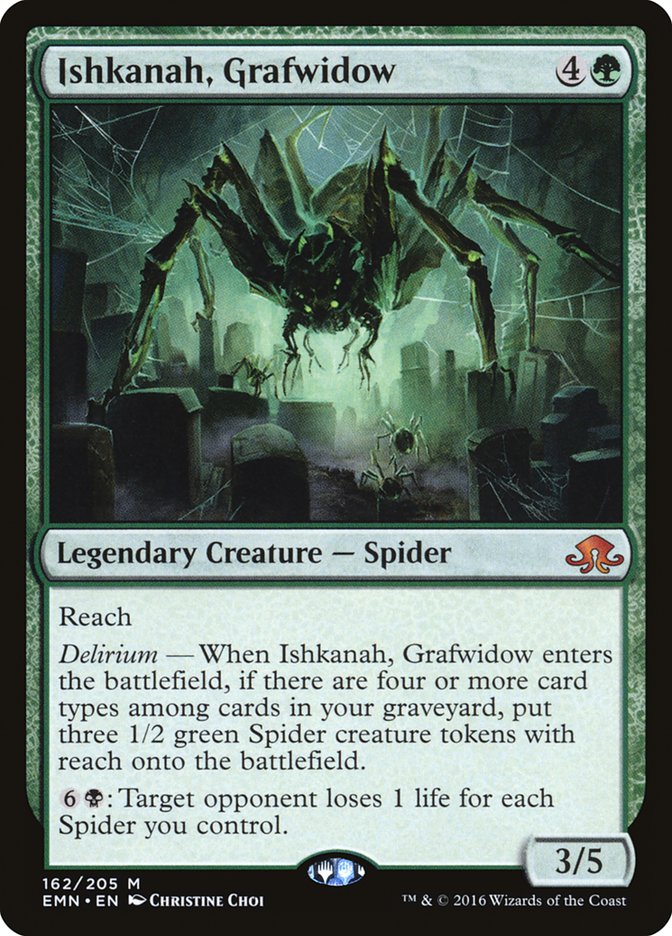

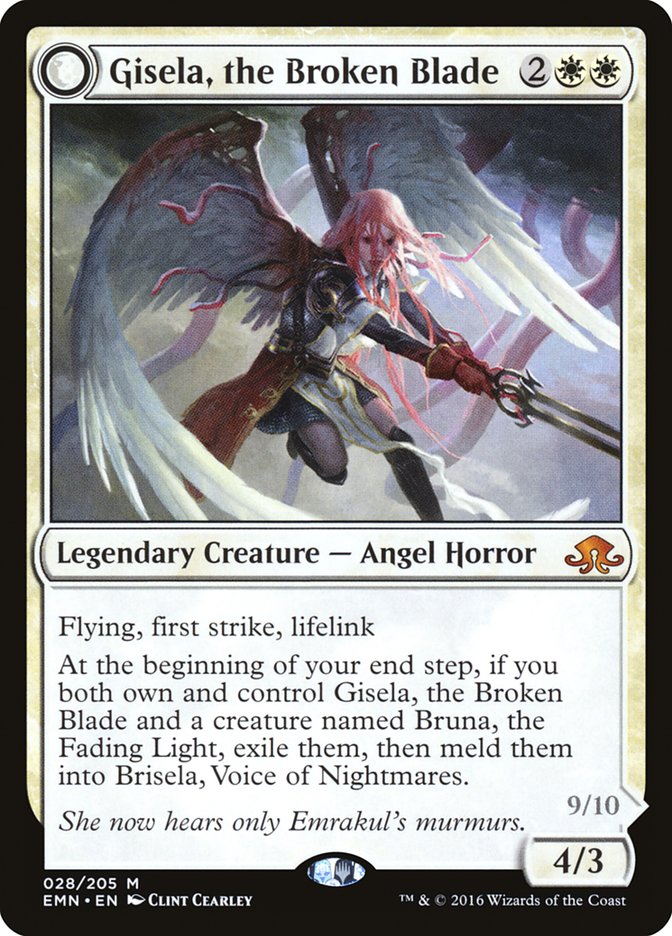
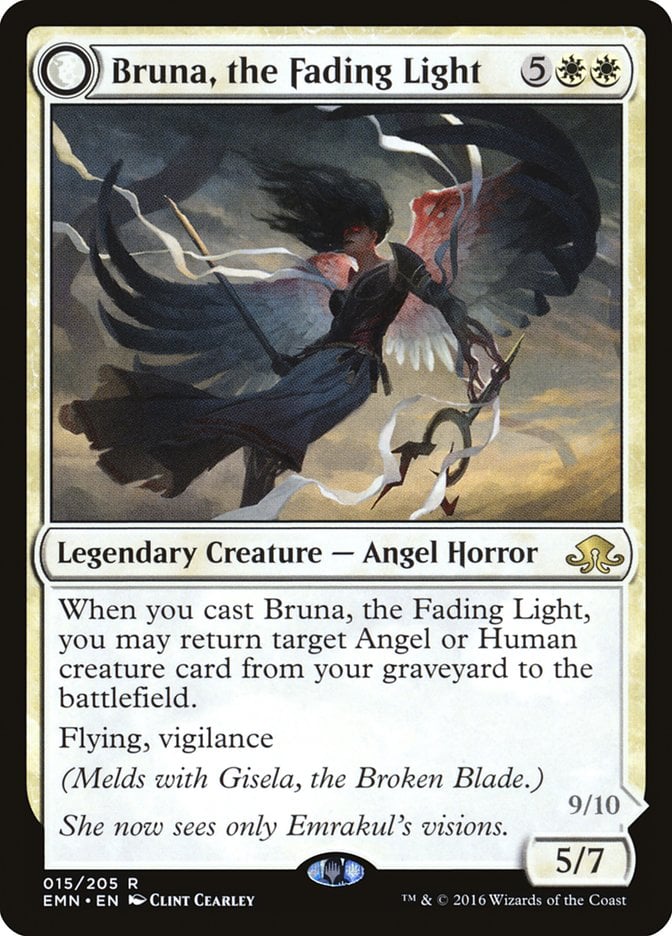
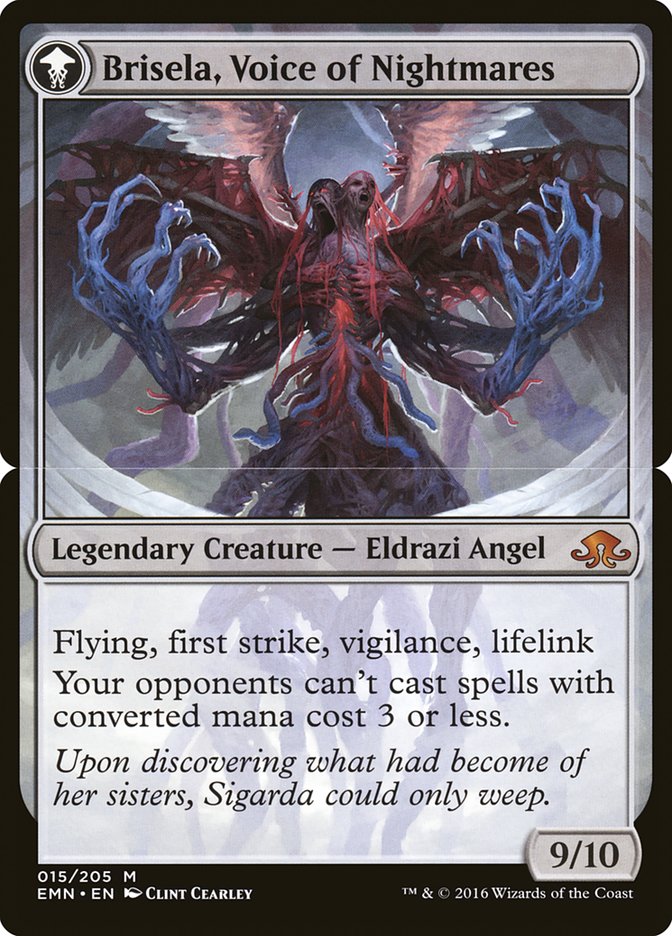
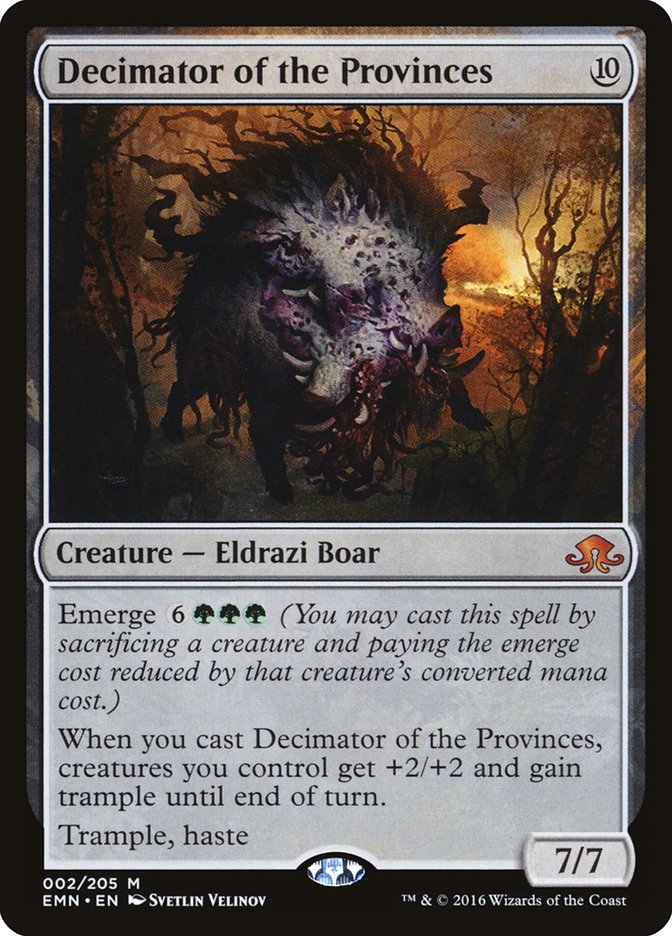
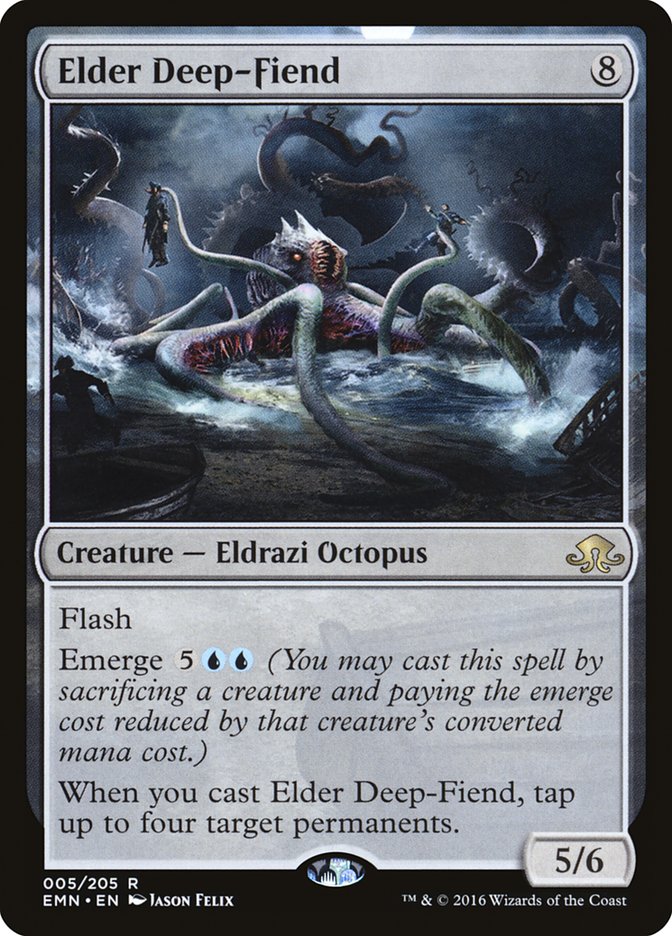
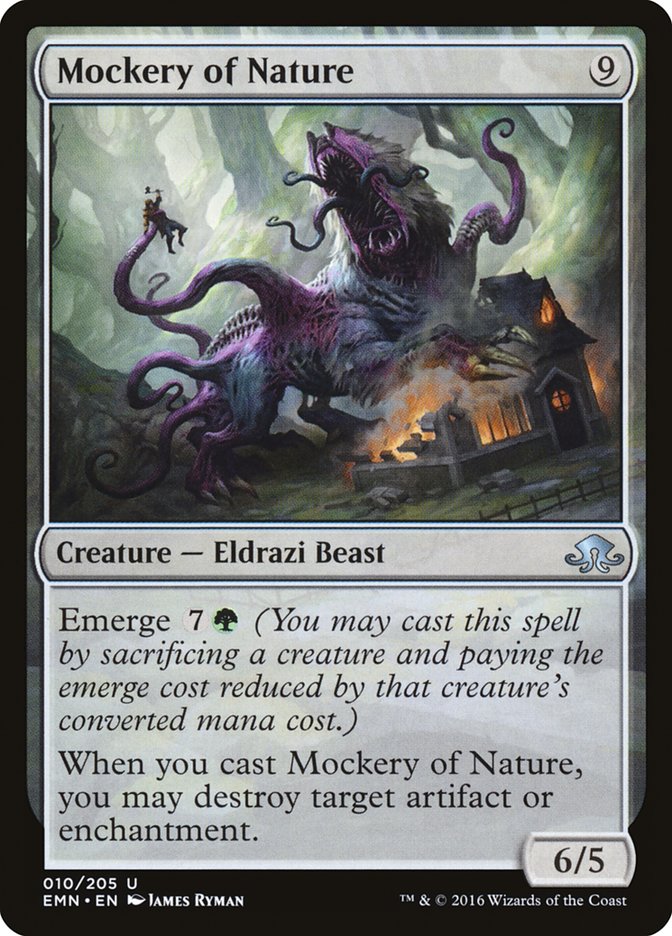

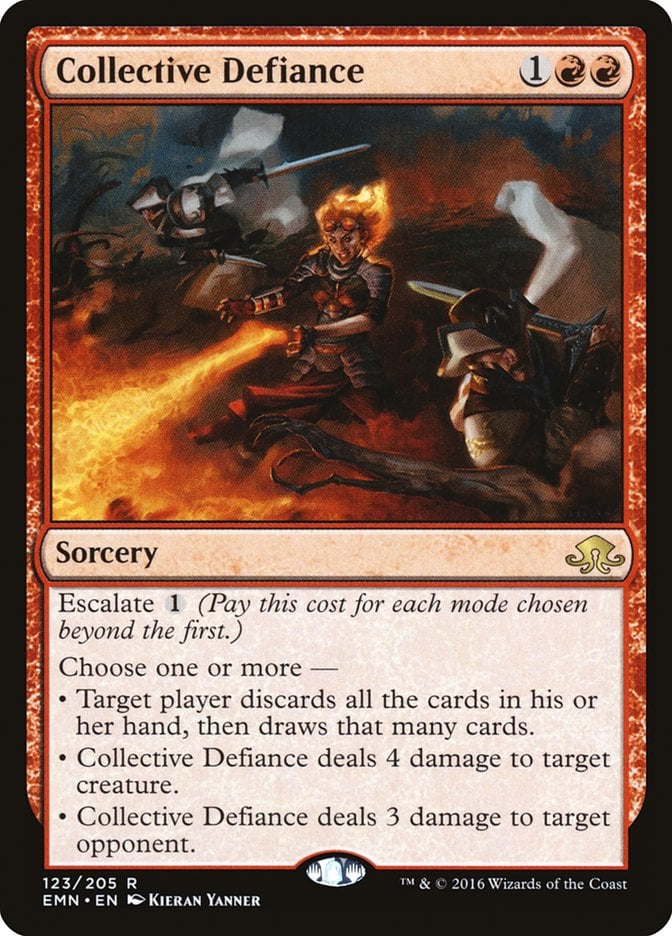
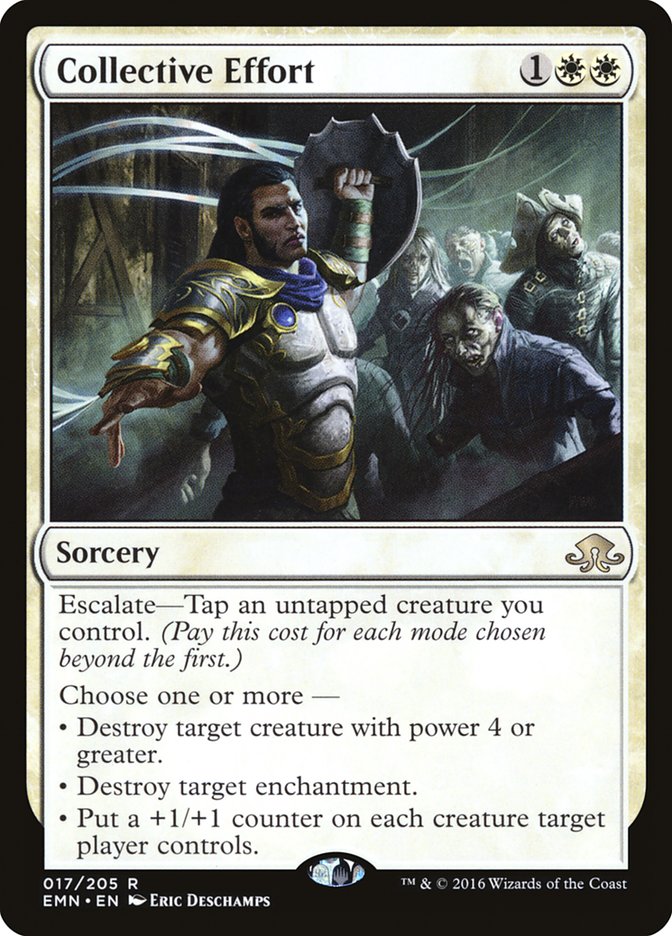
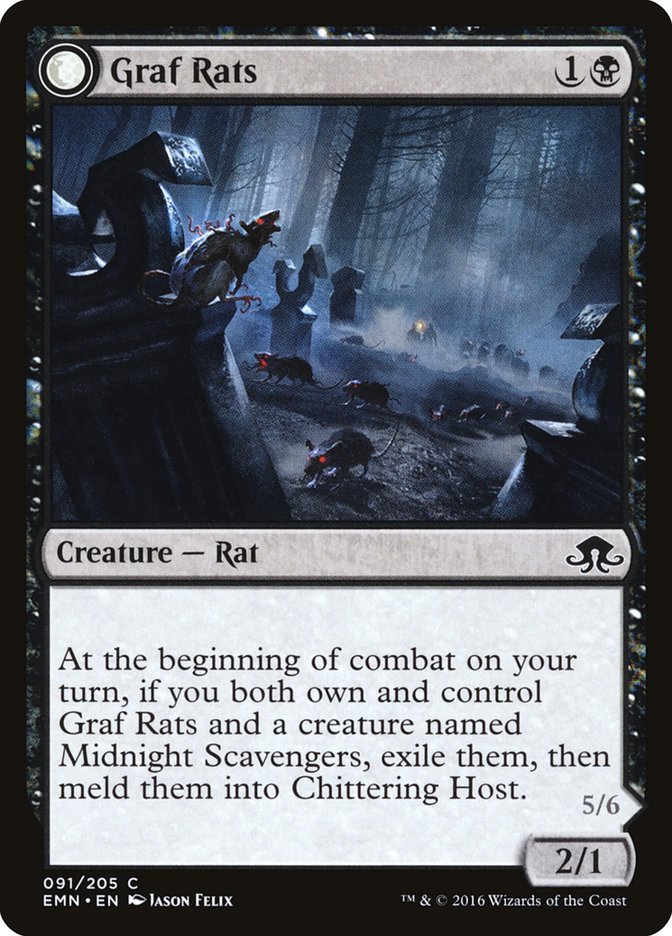
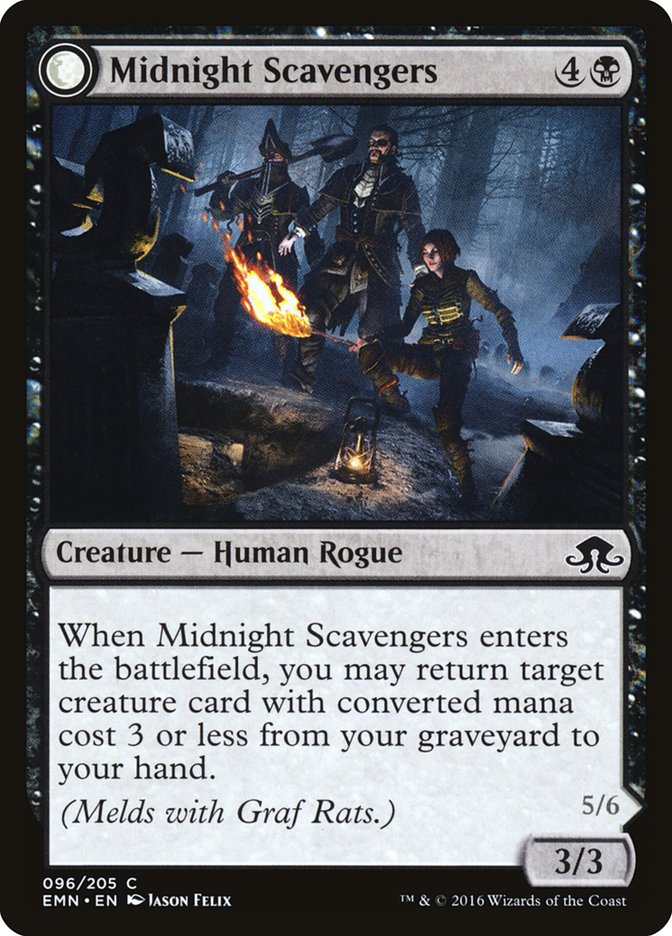
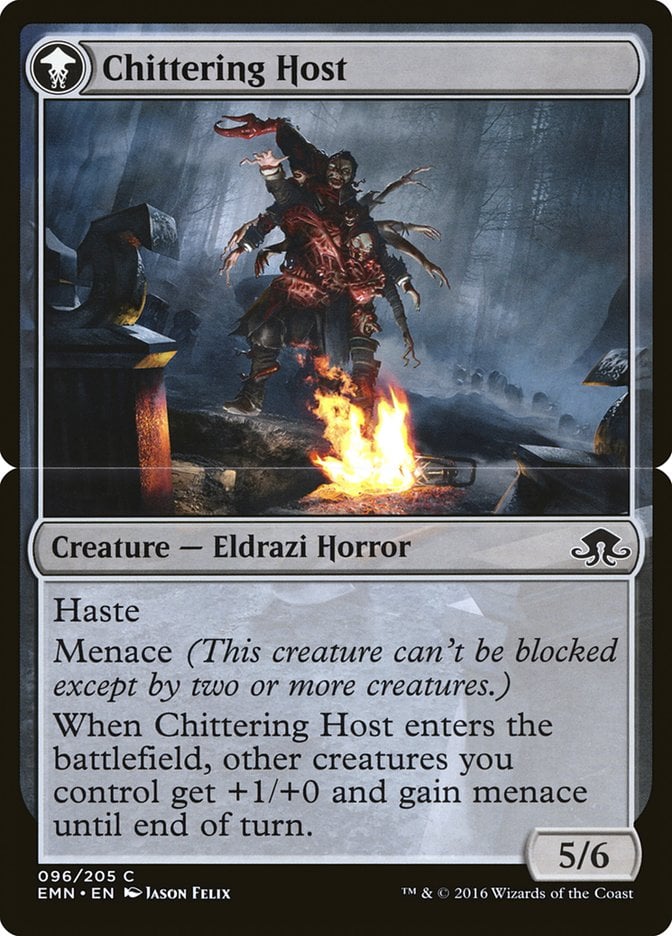
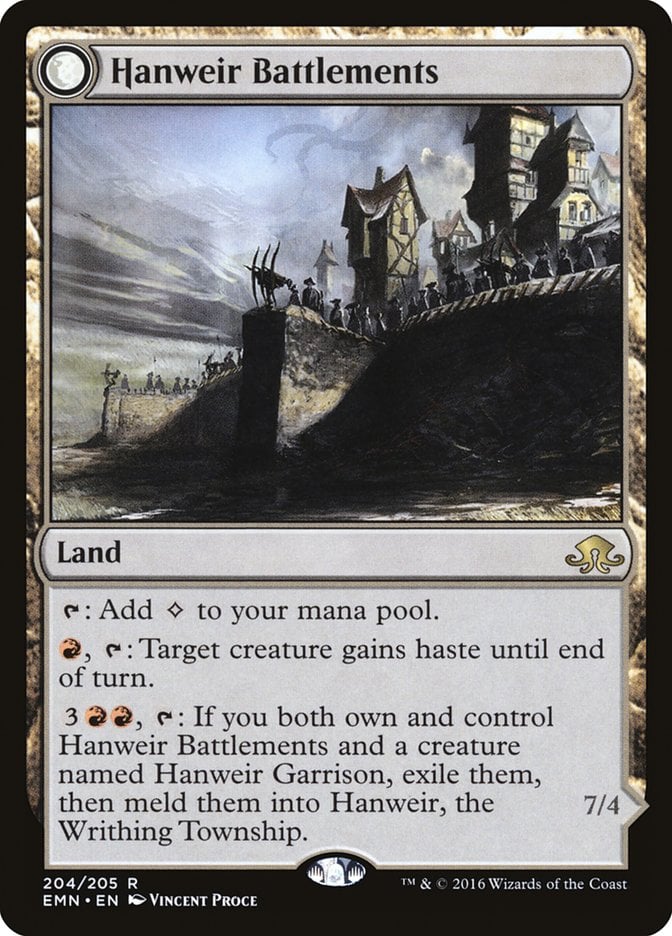
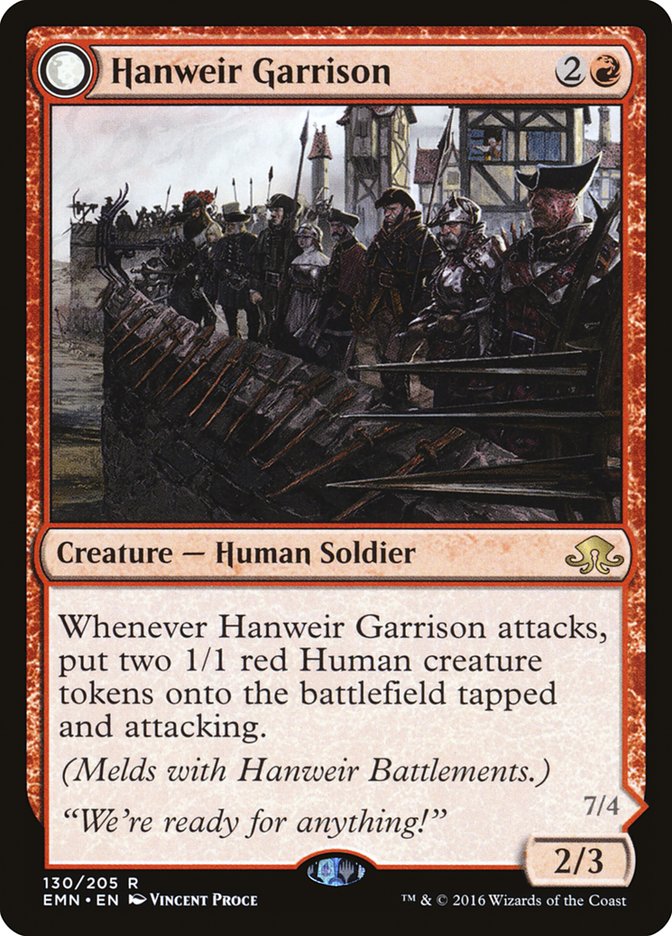
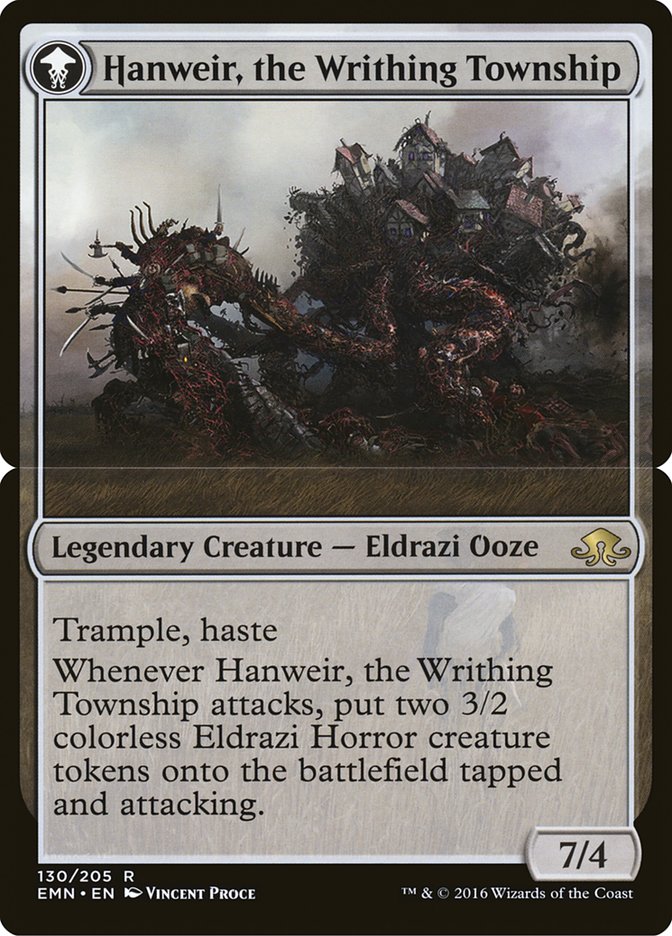
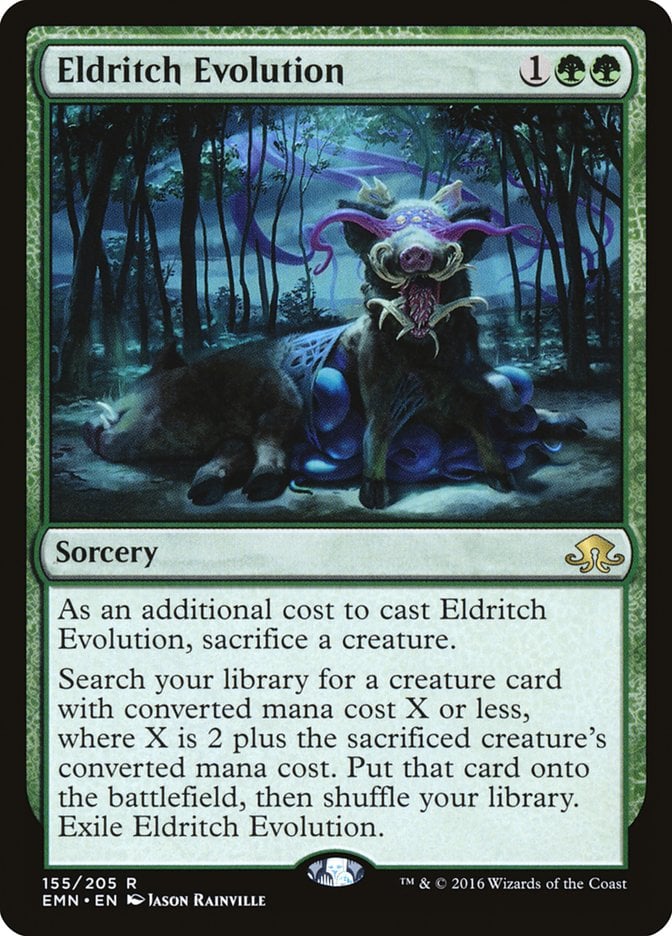

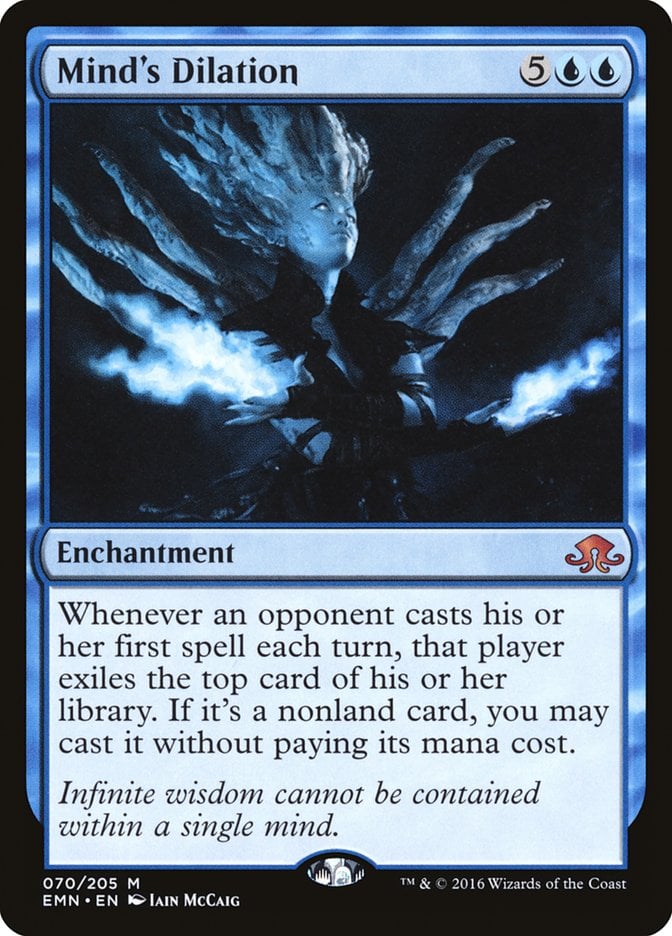




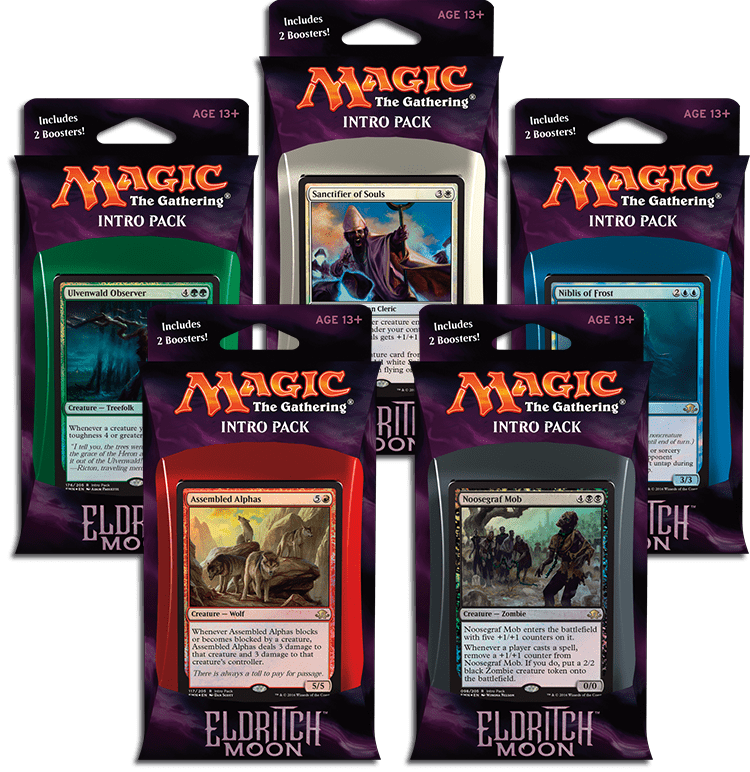

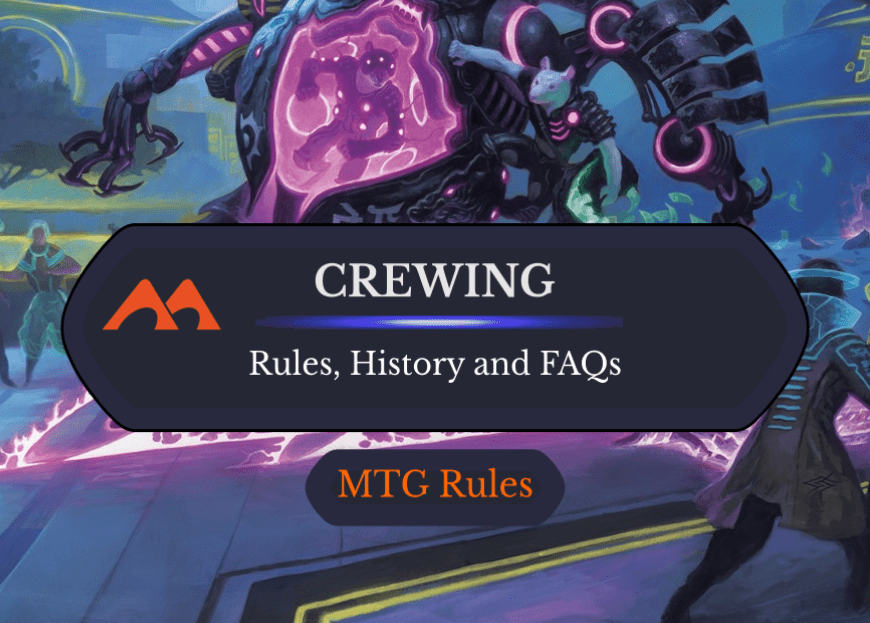
Add Comment